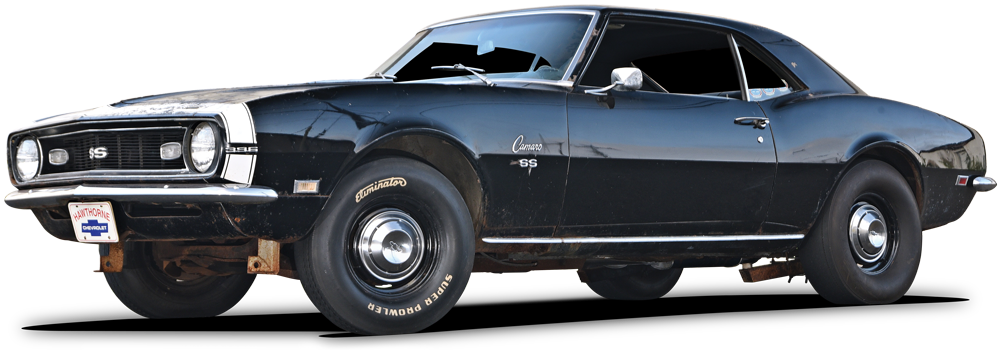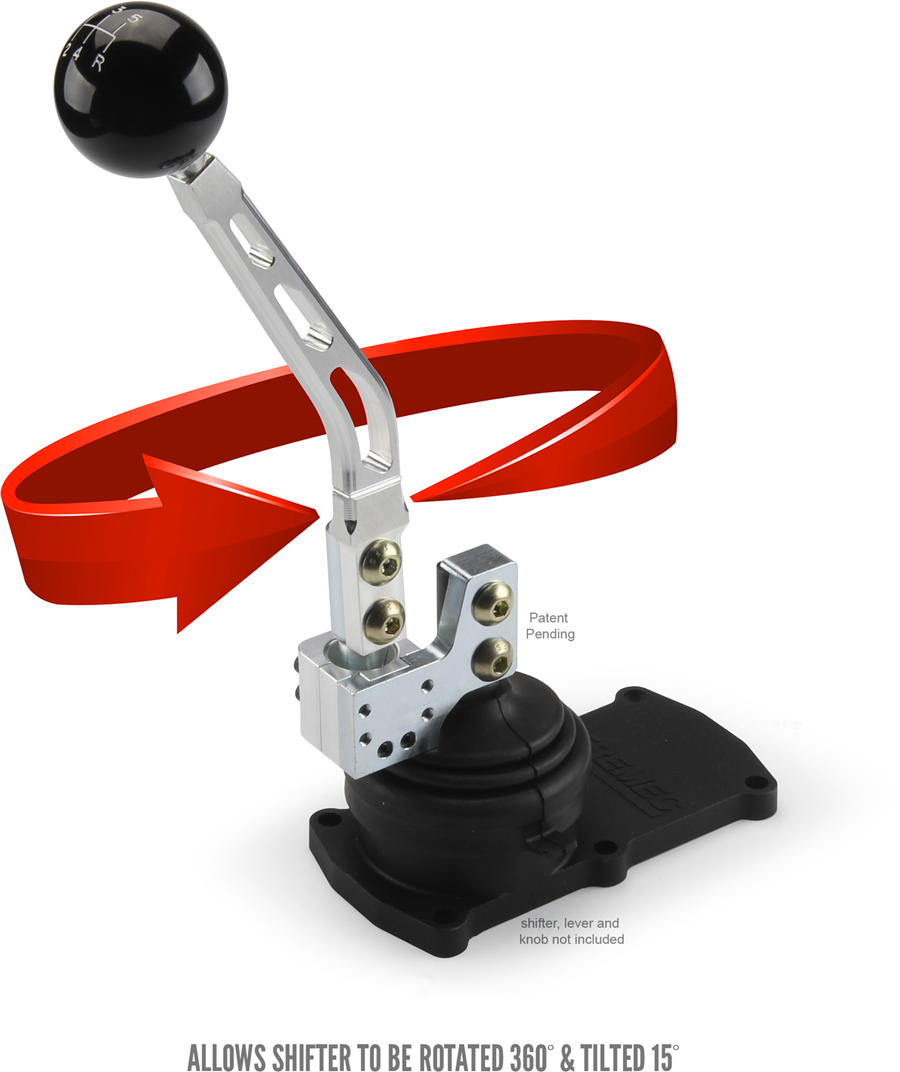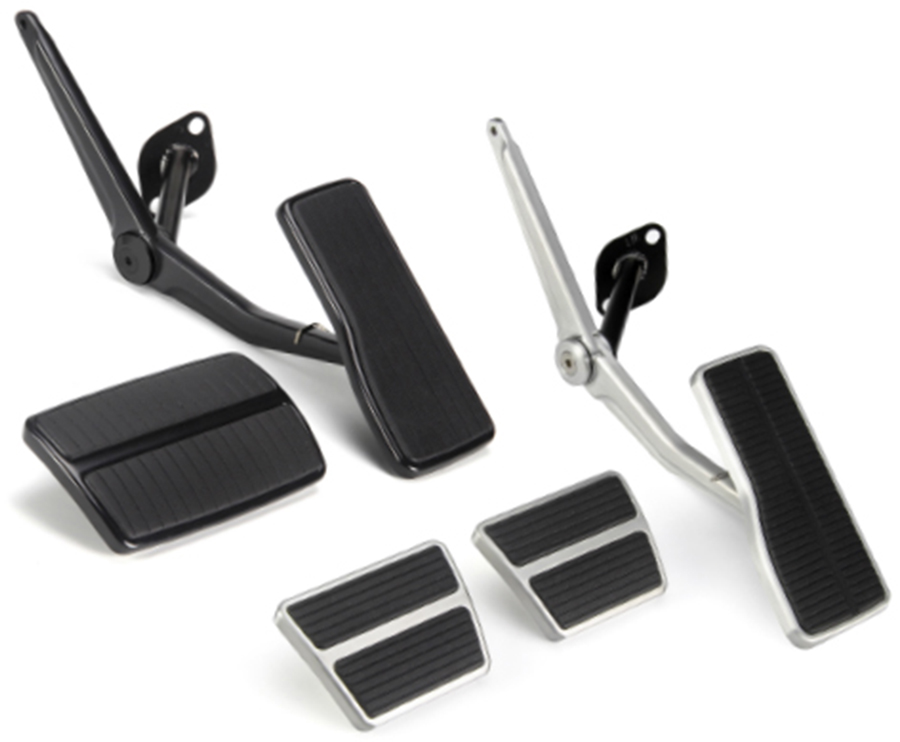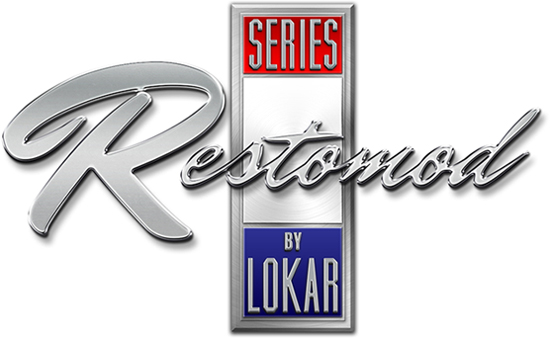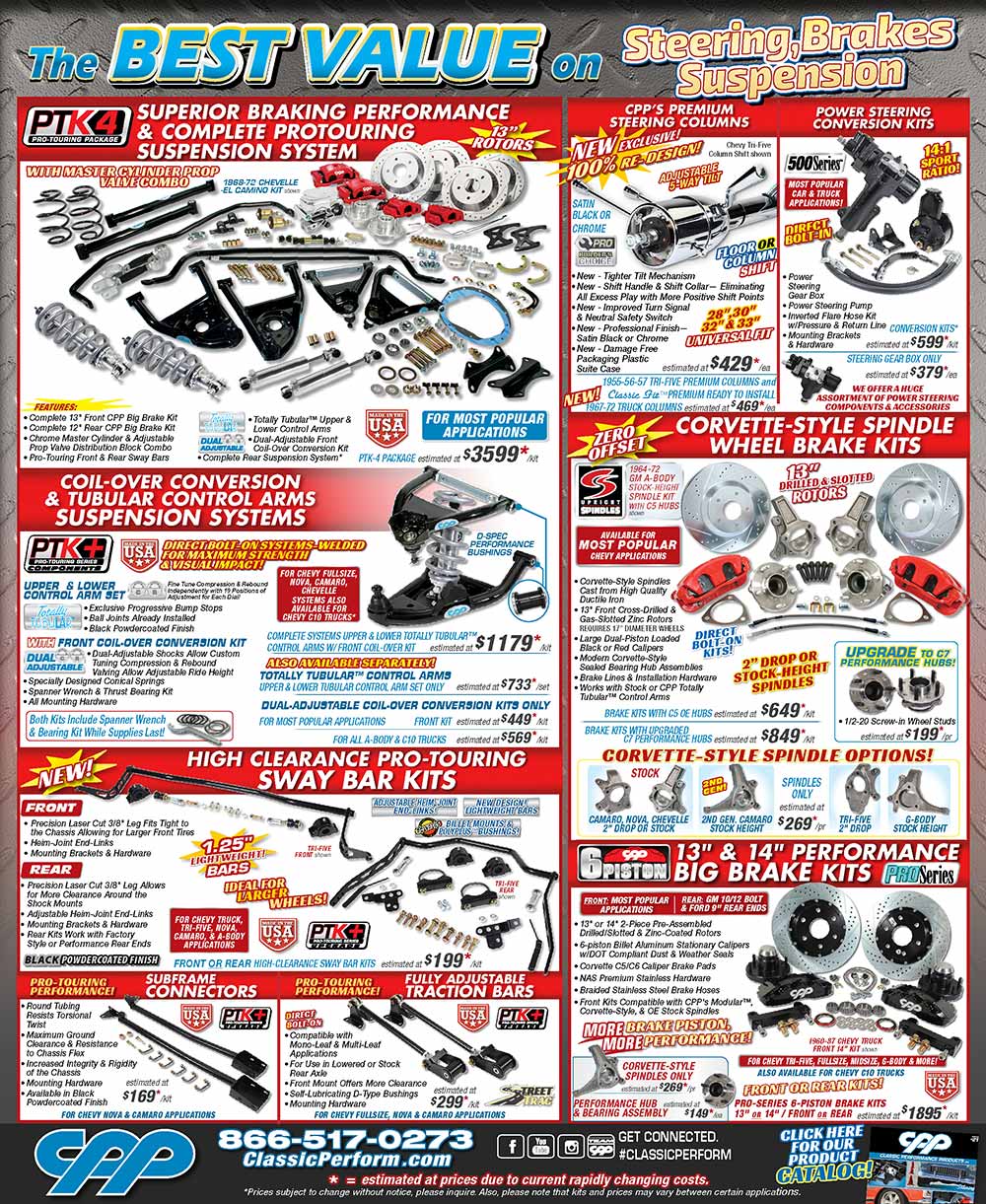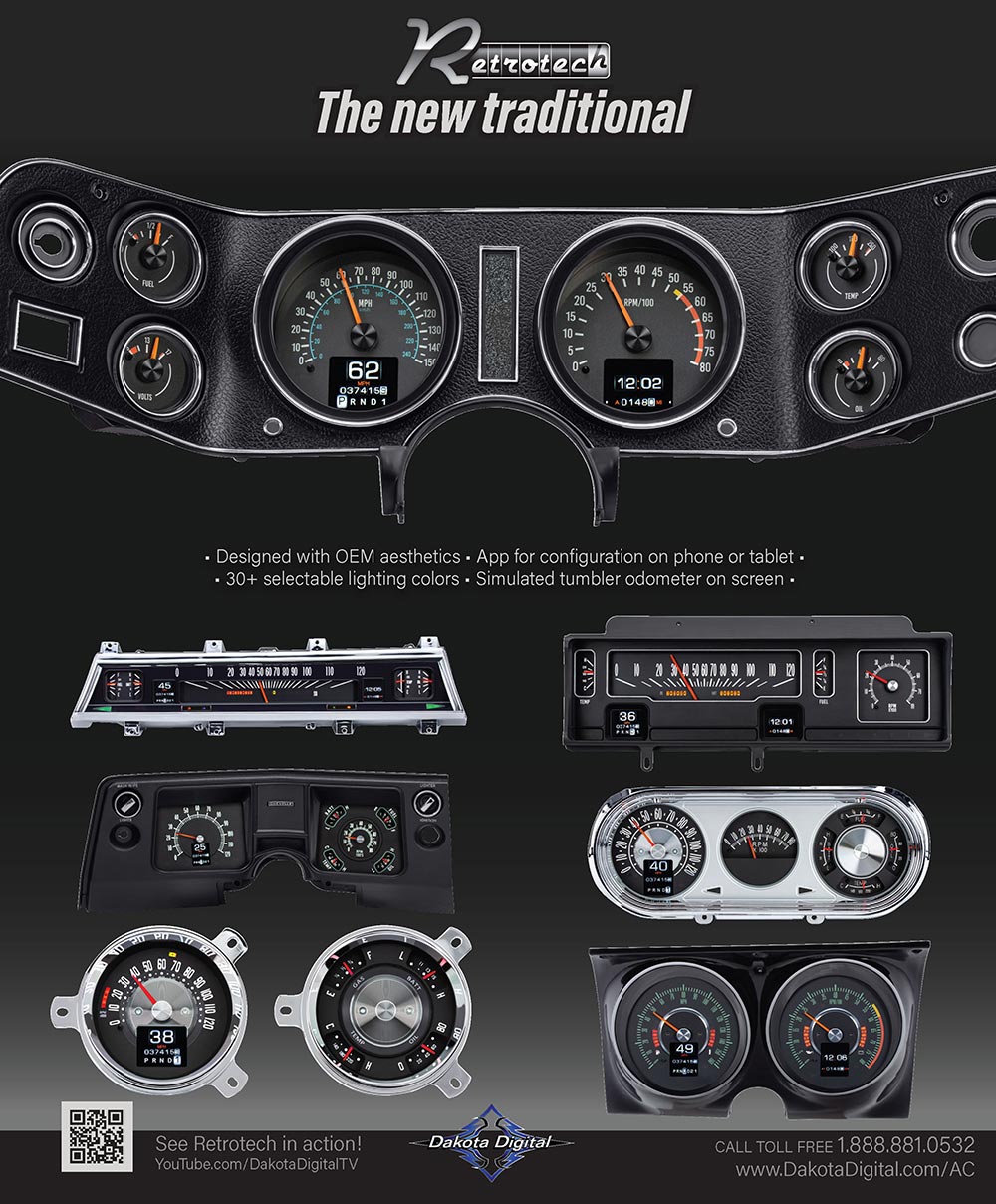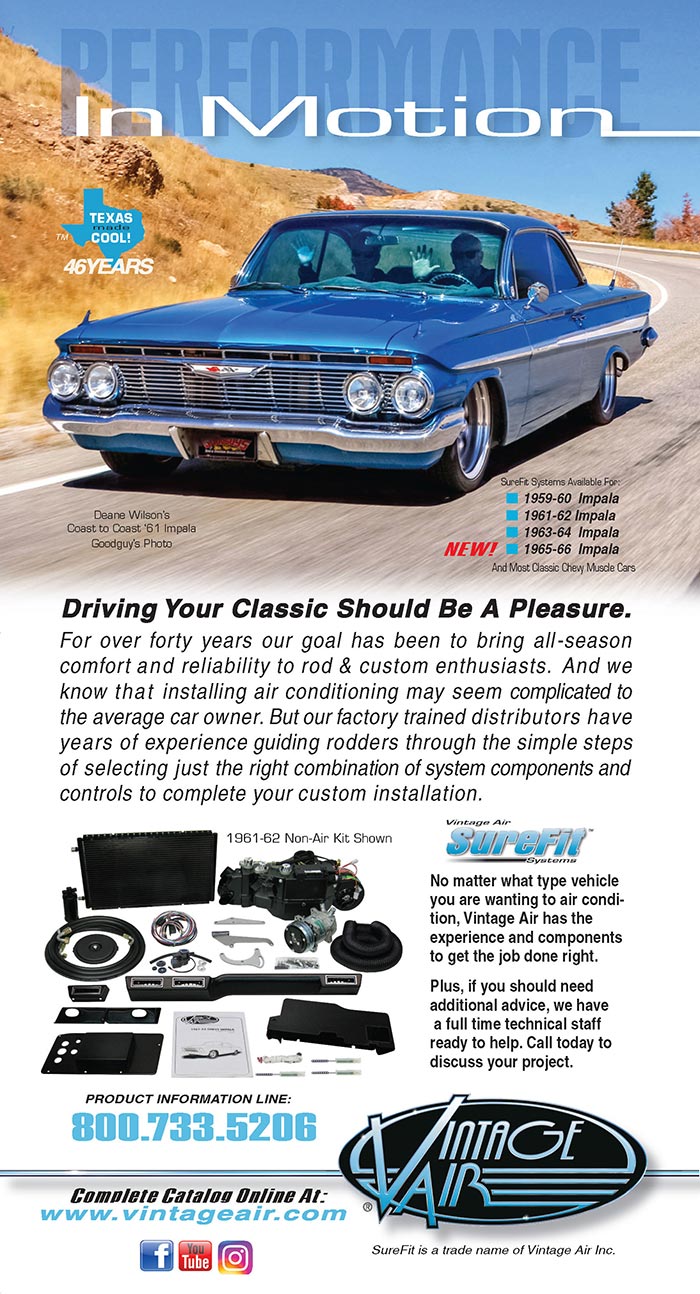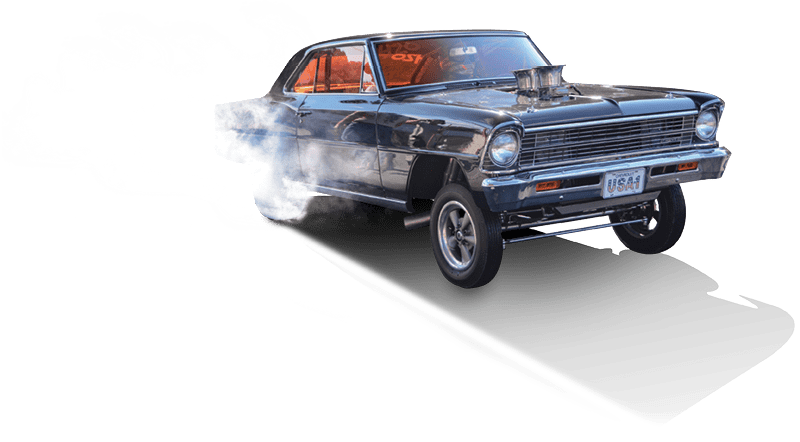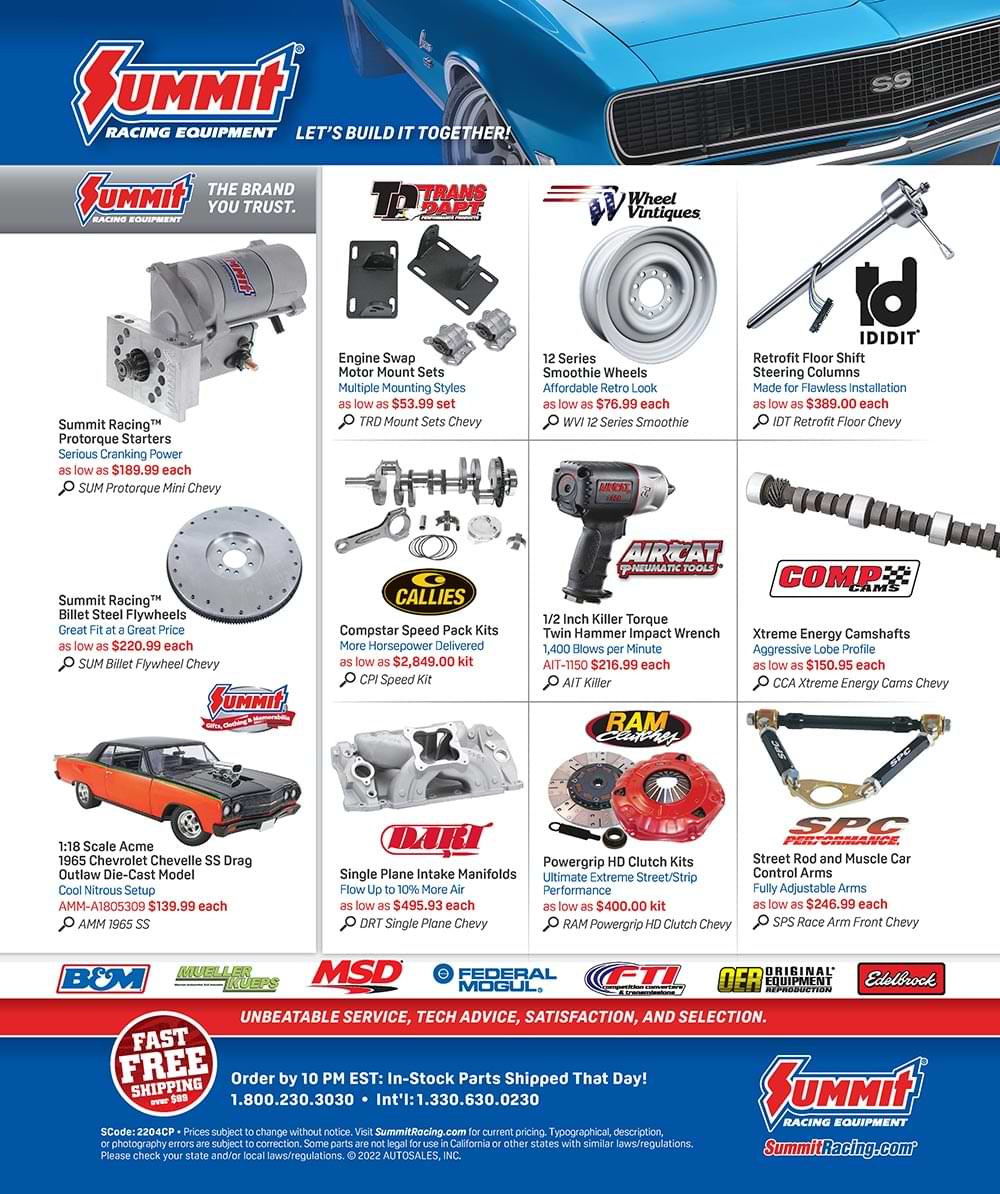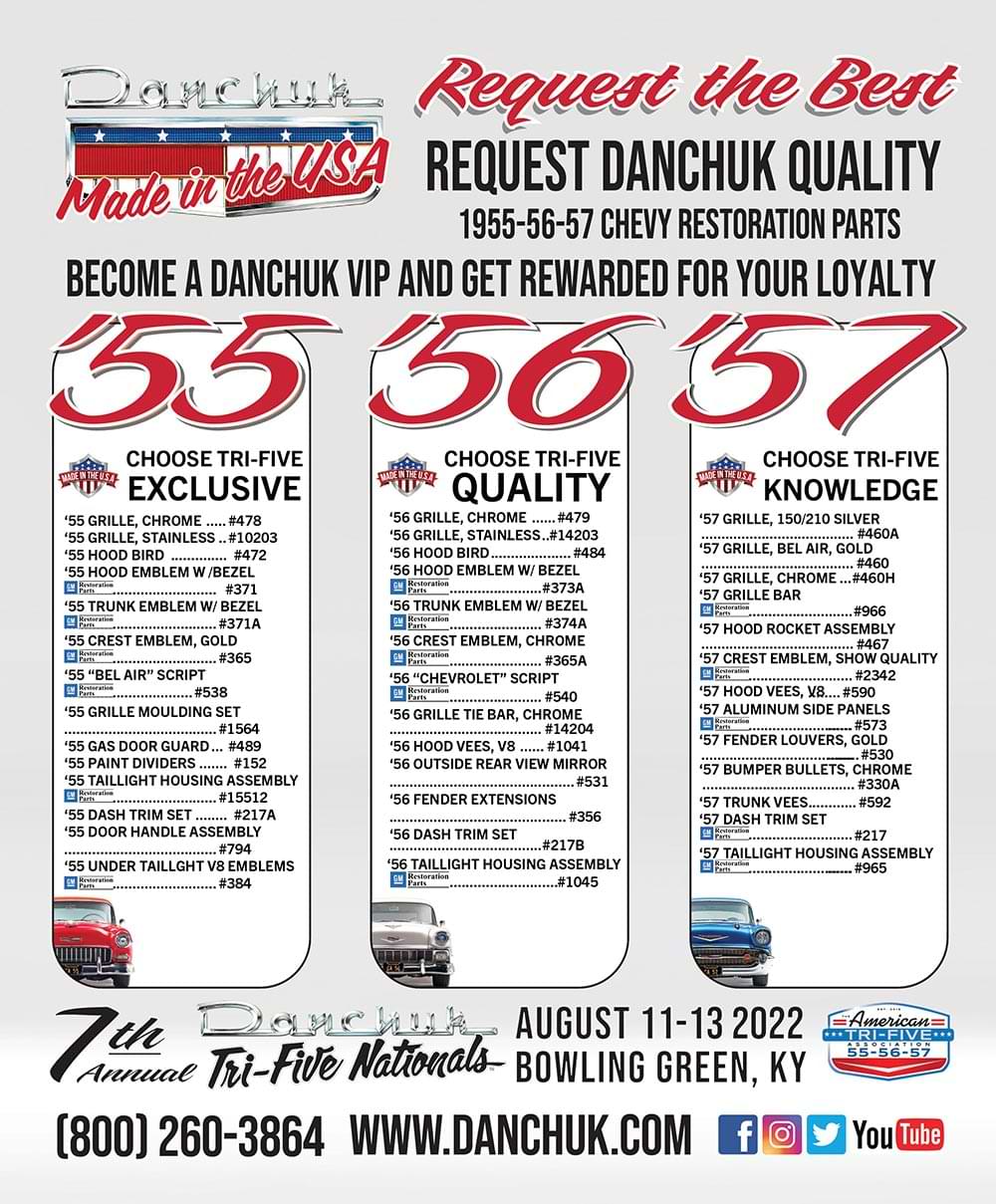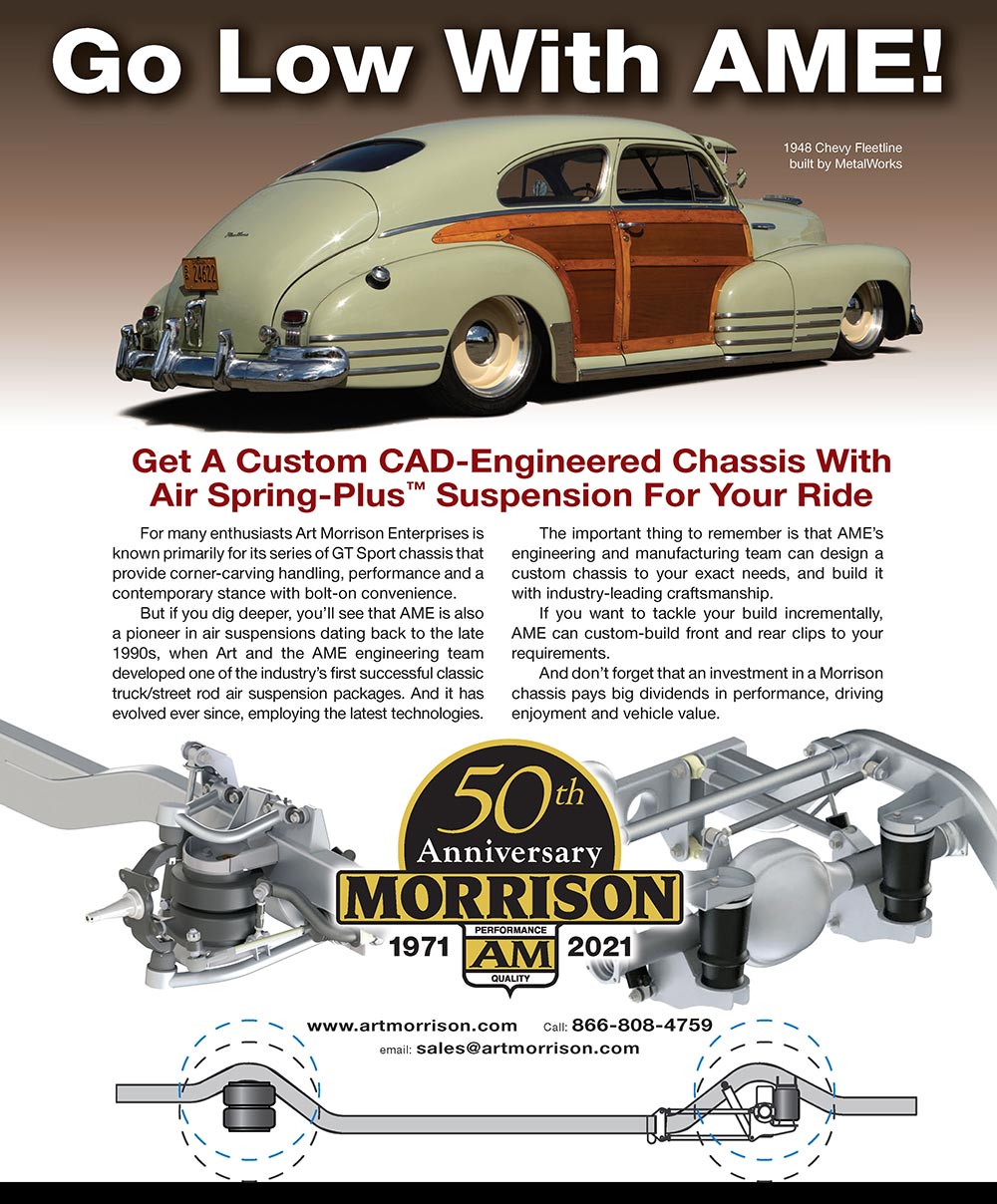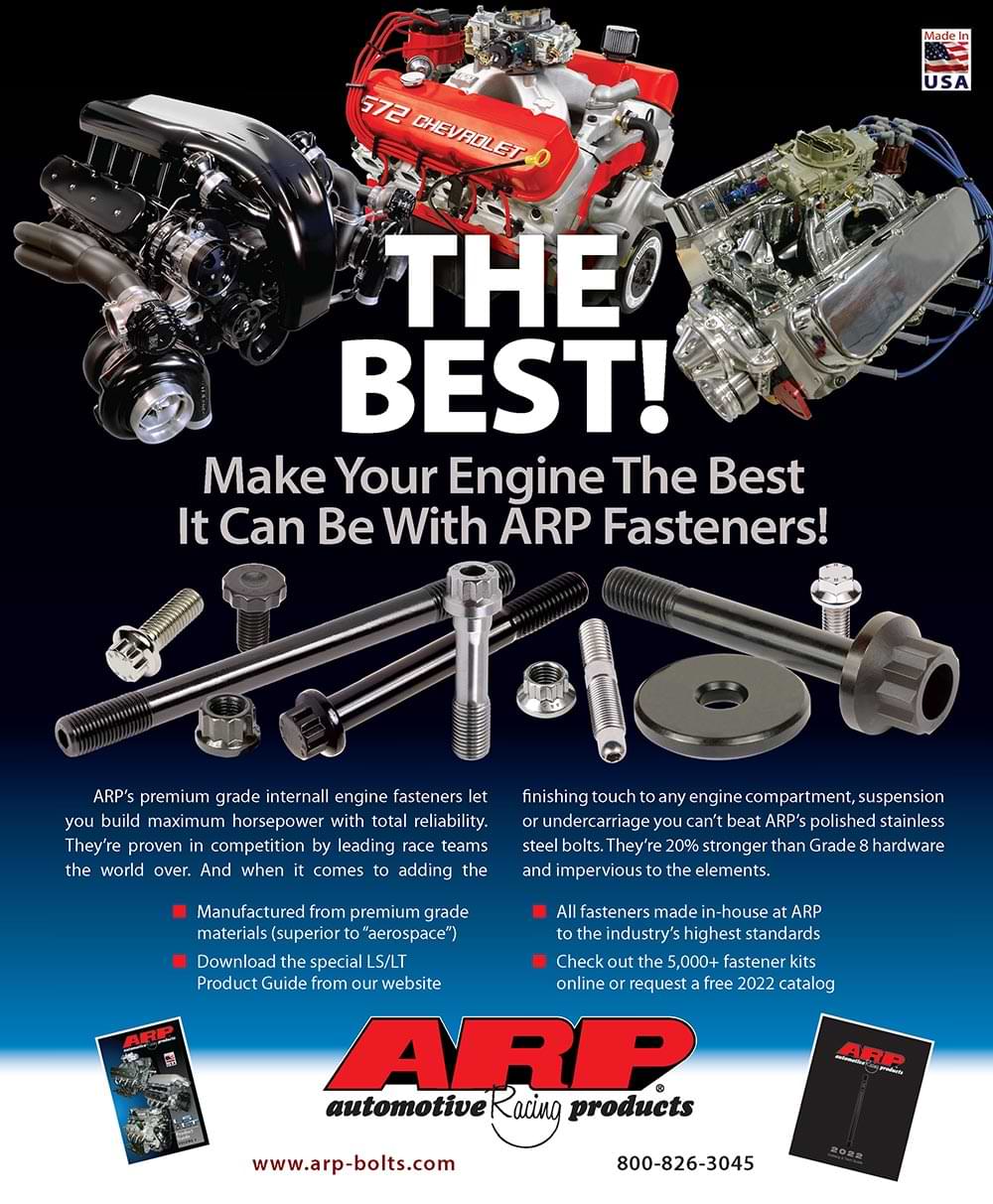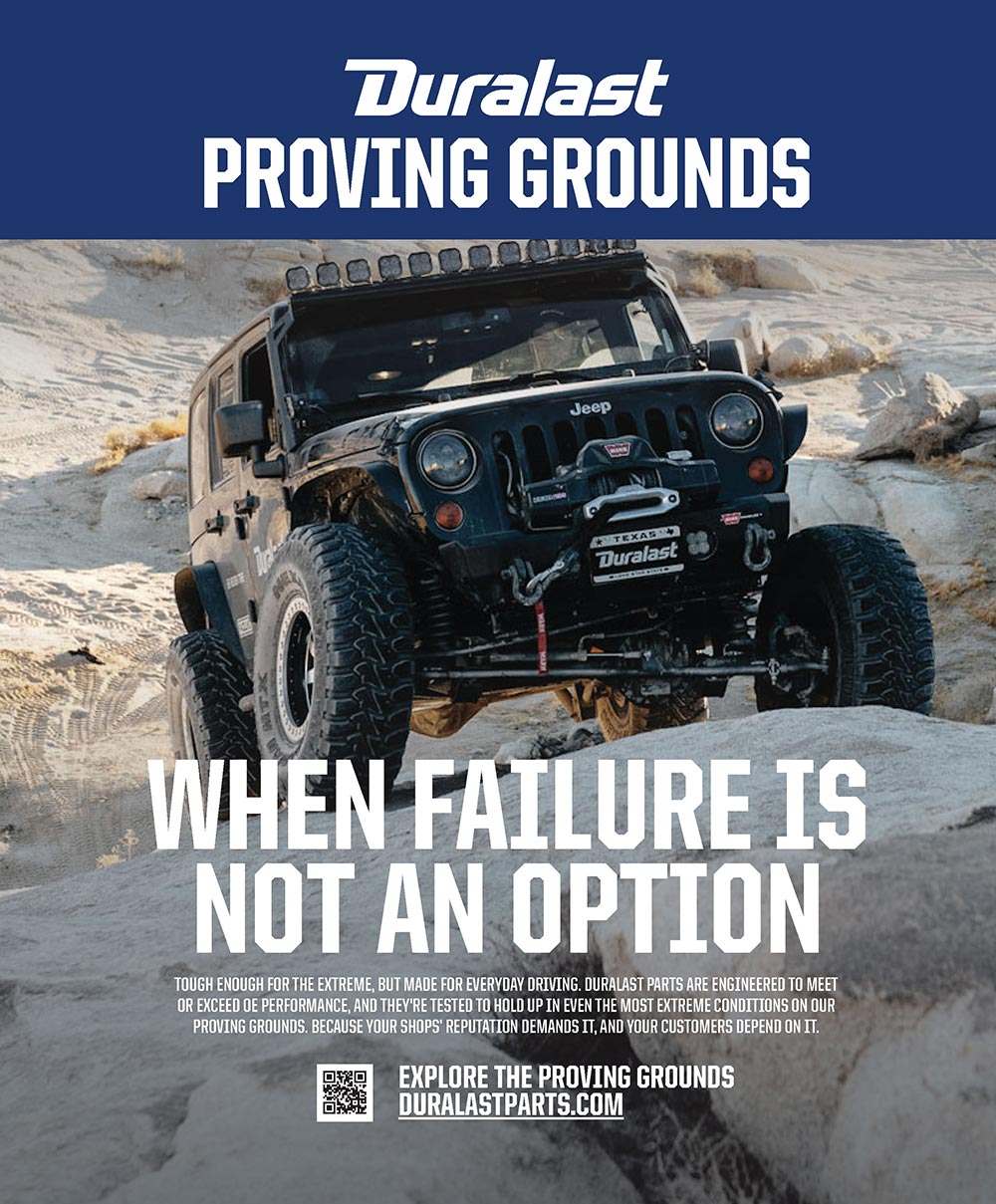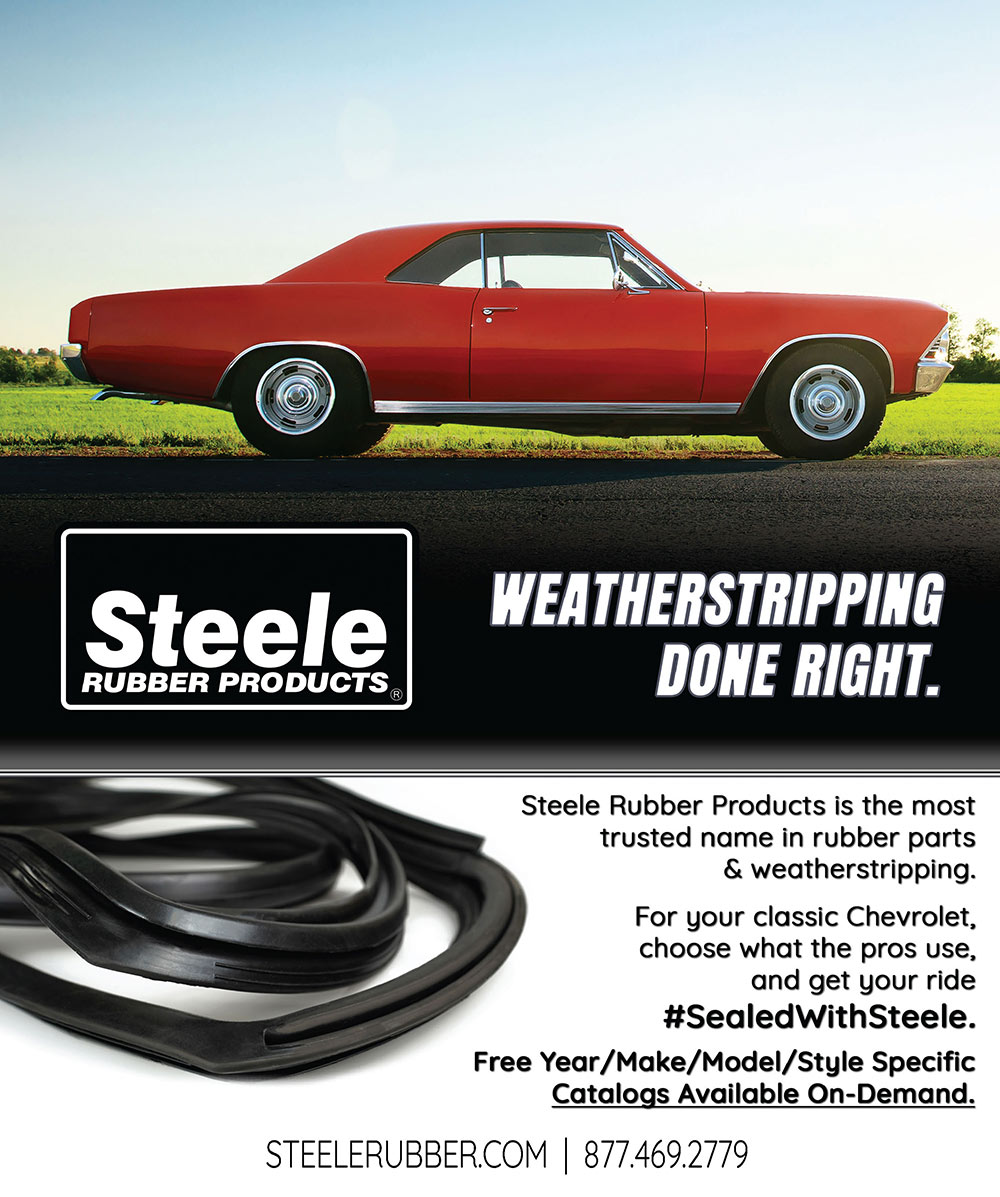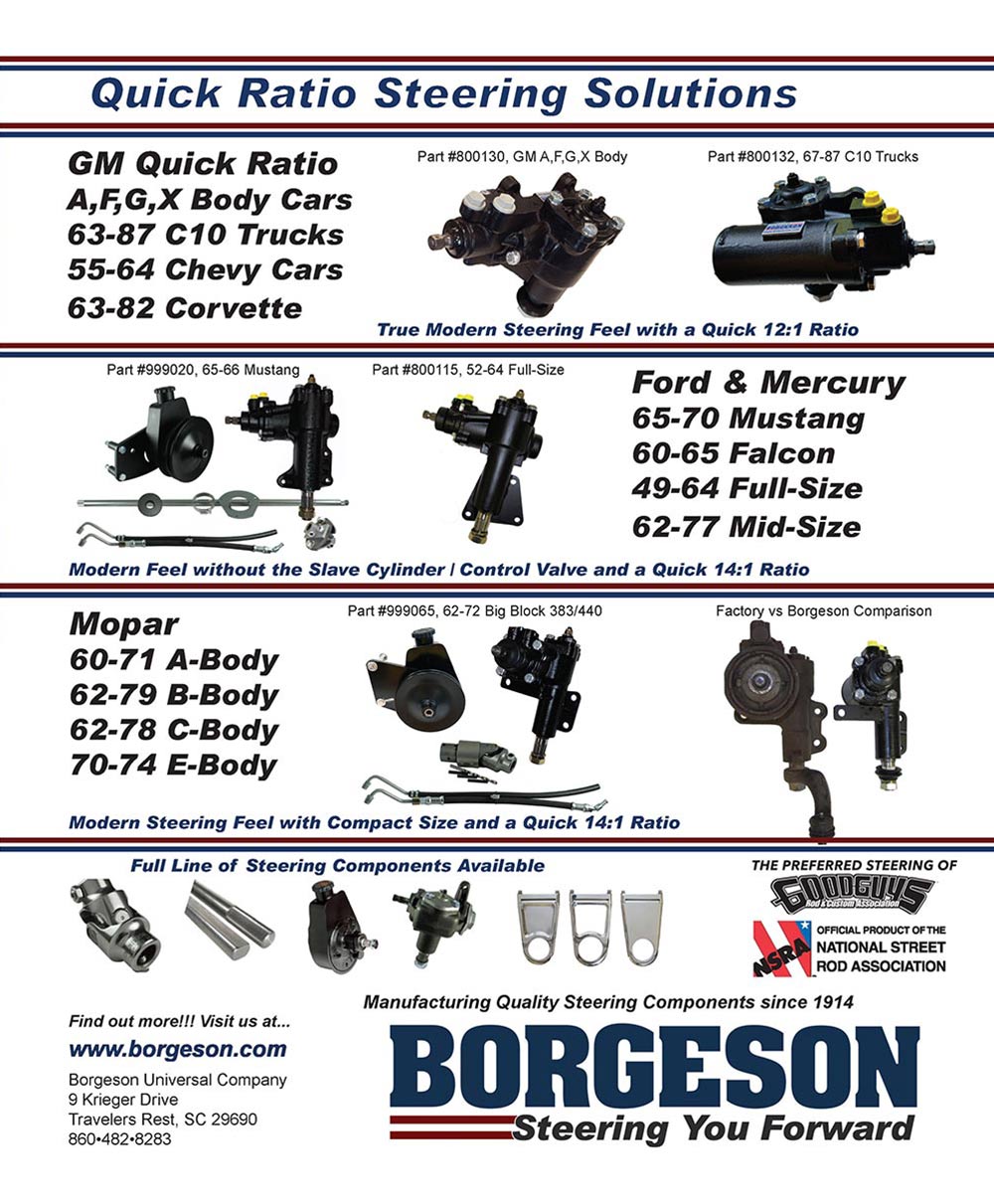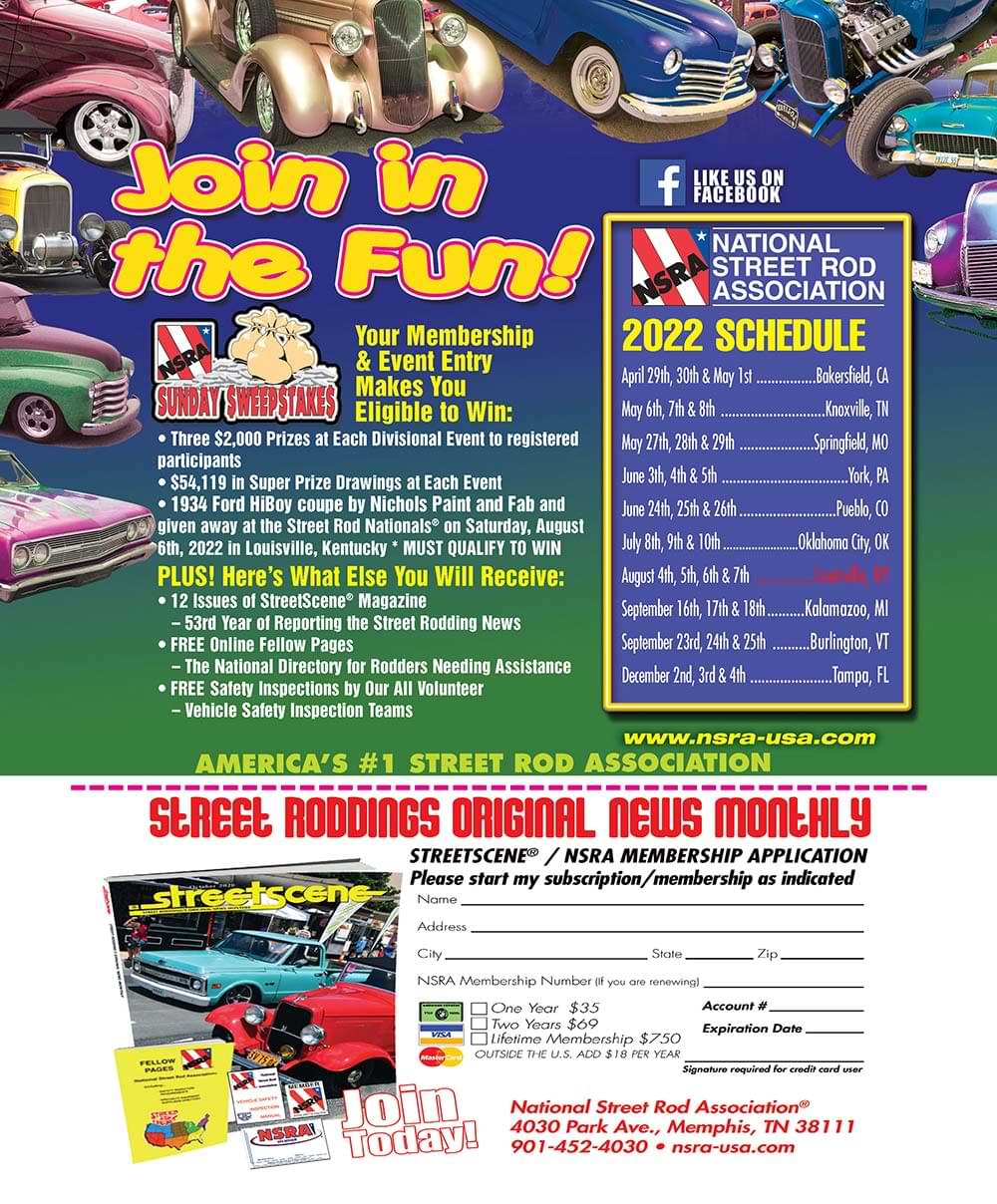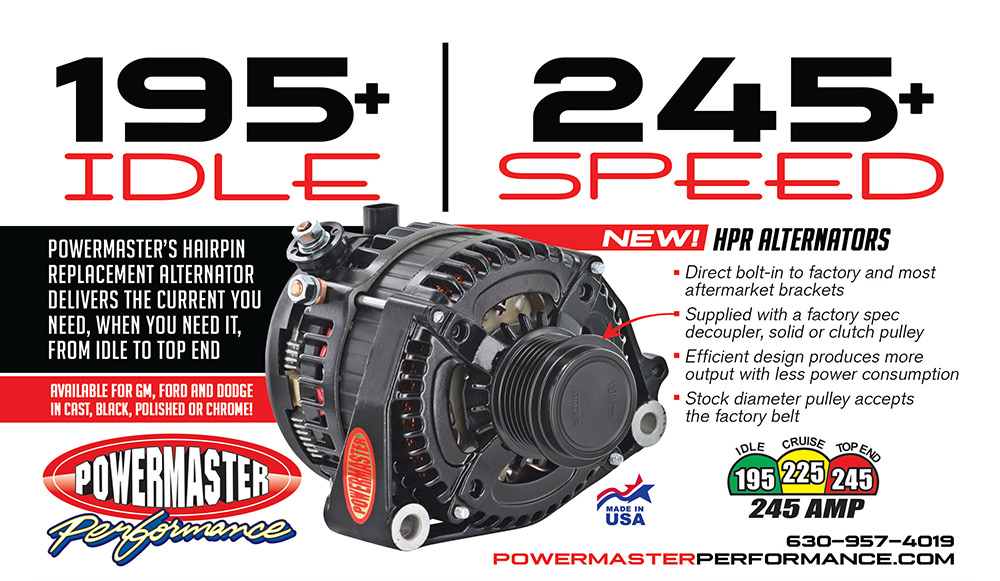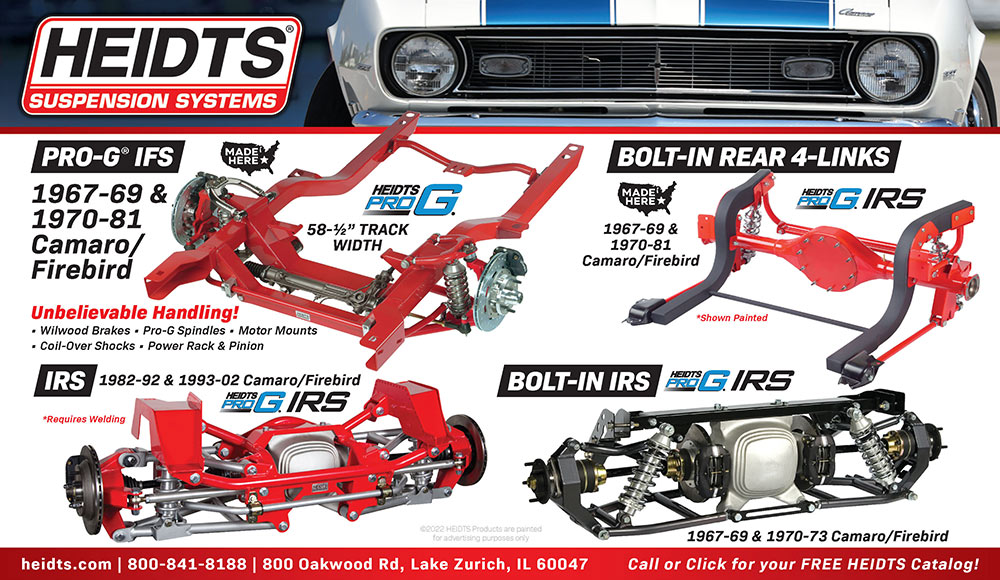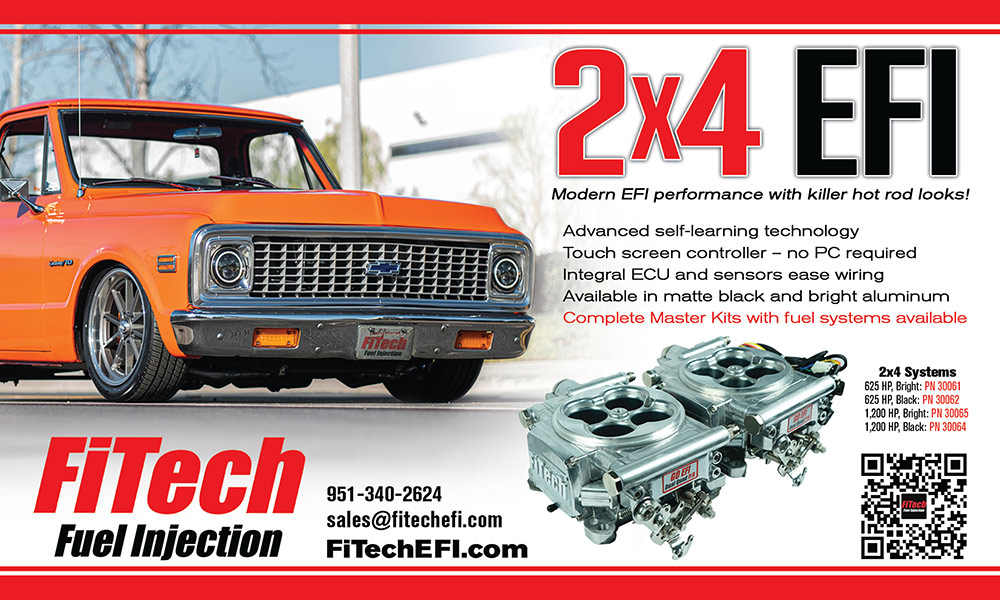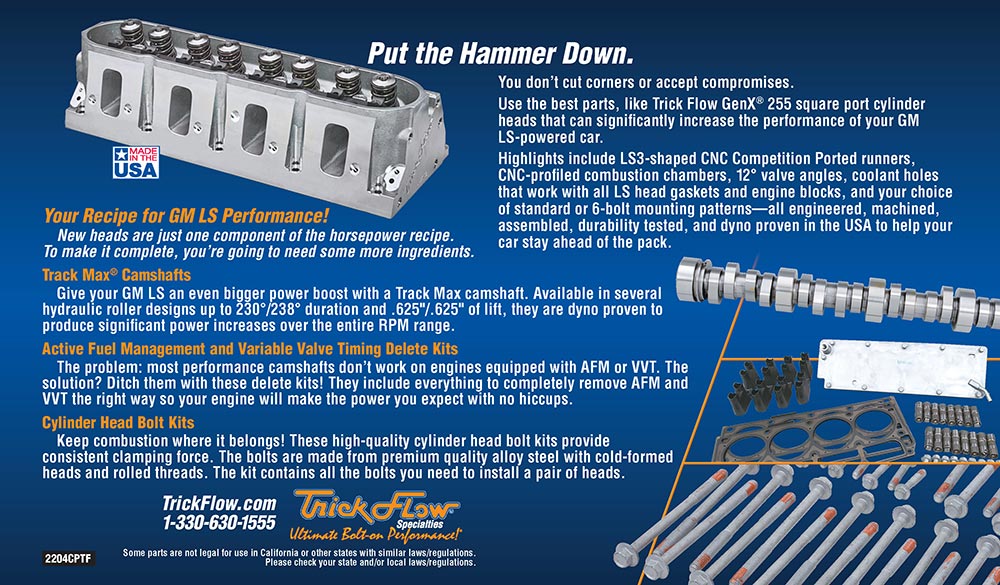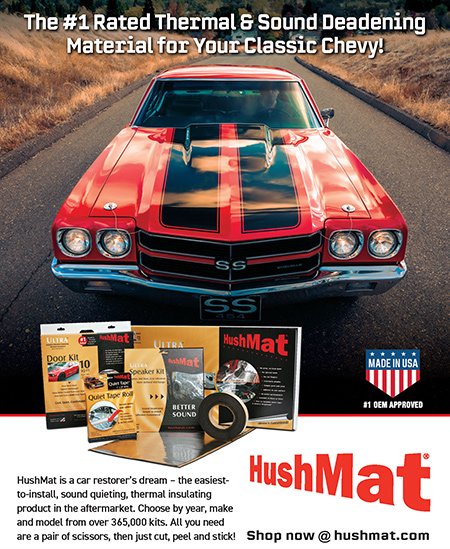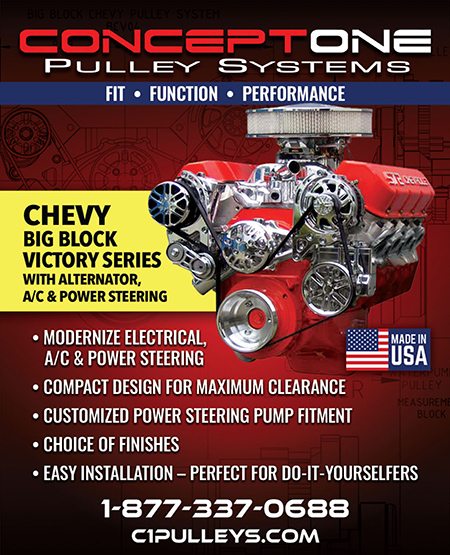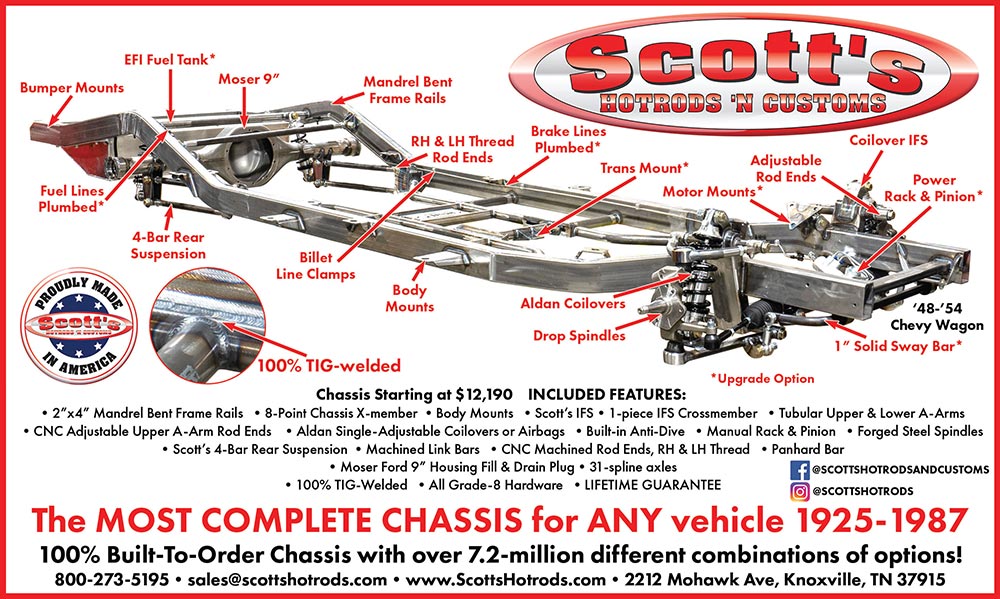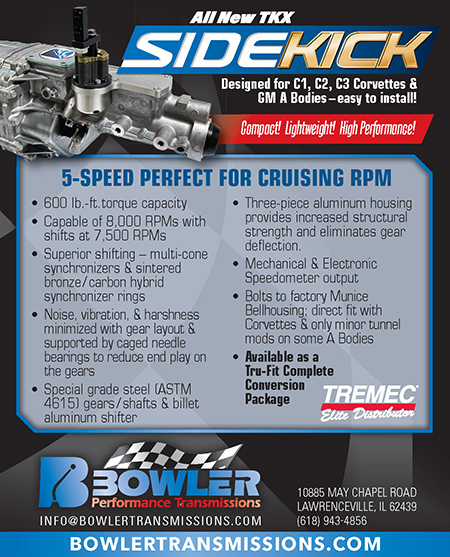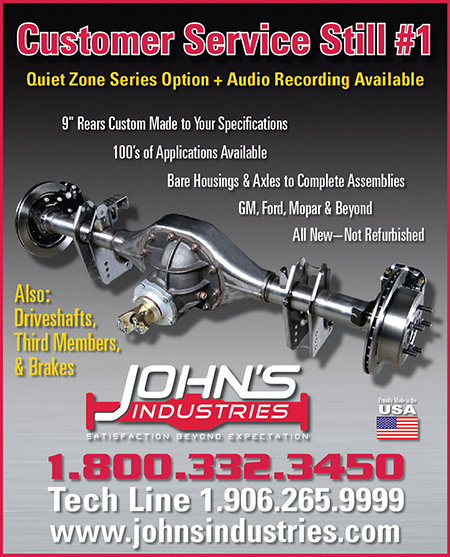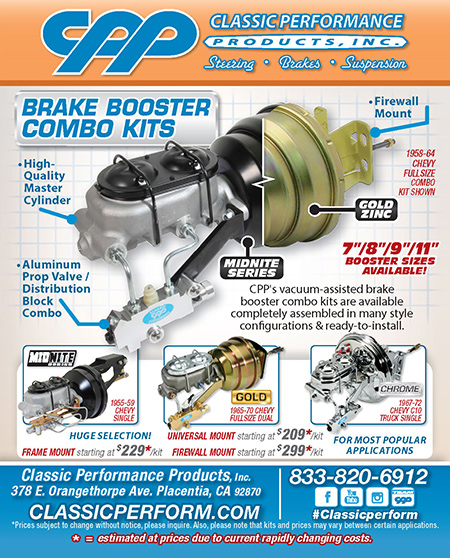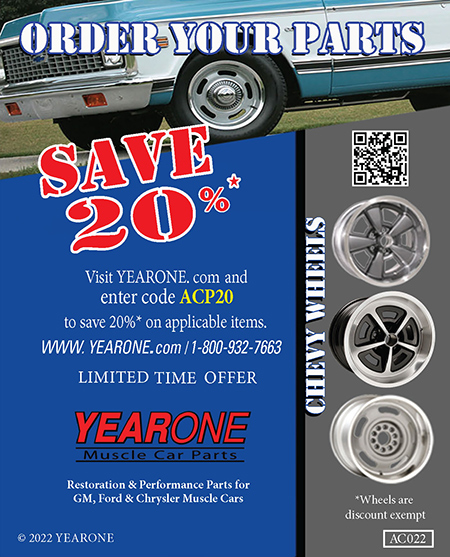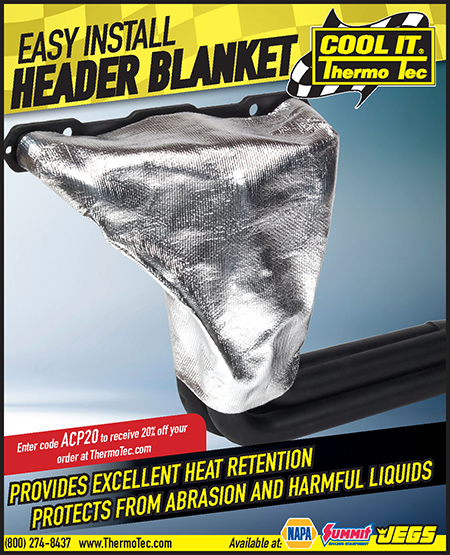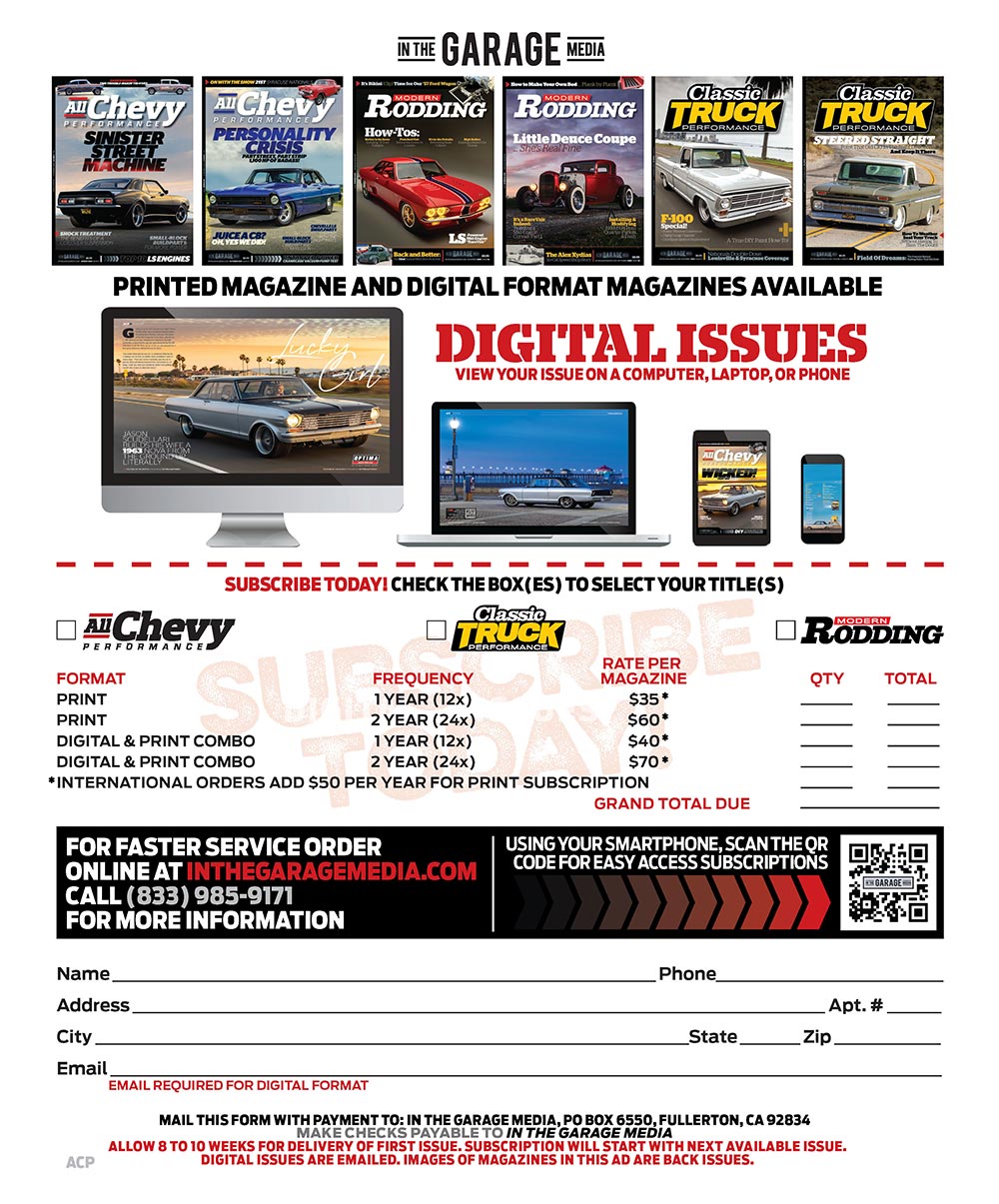New LS/LT Accessory Drive System
Heater Box, Heater Core & Gauges
New LS/LT Accessory Drive System
Heater Box, Heater Core & Gauges
 TOC
TOC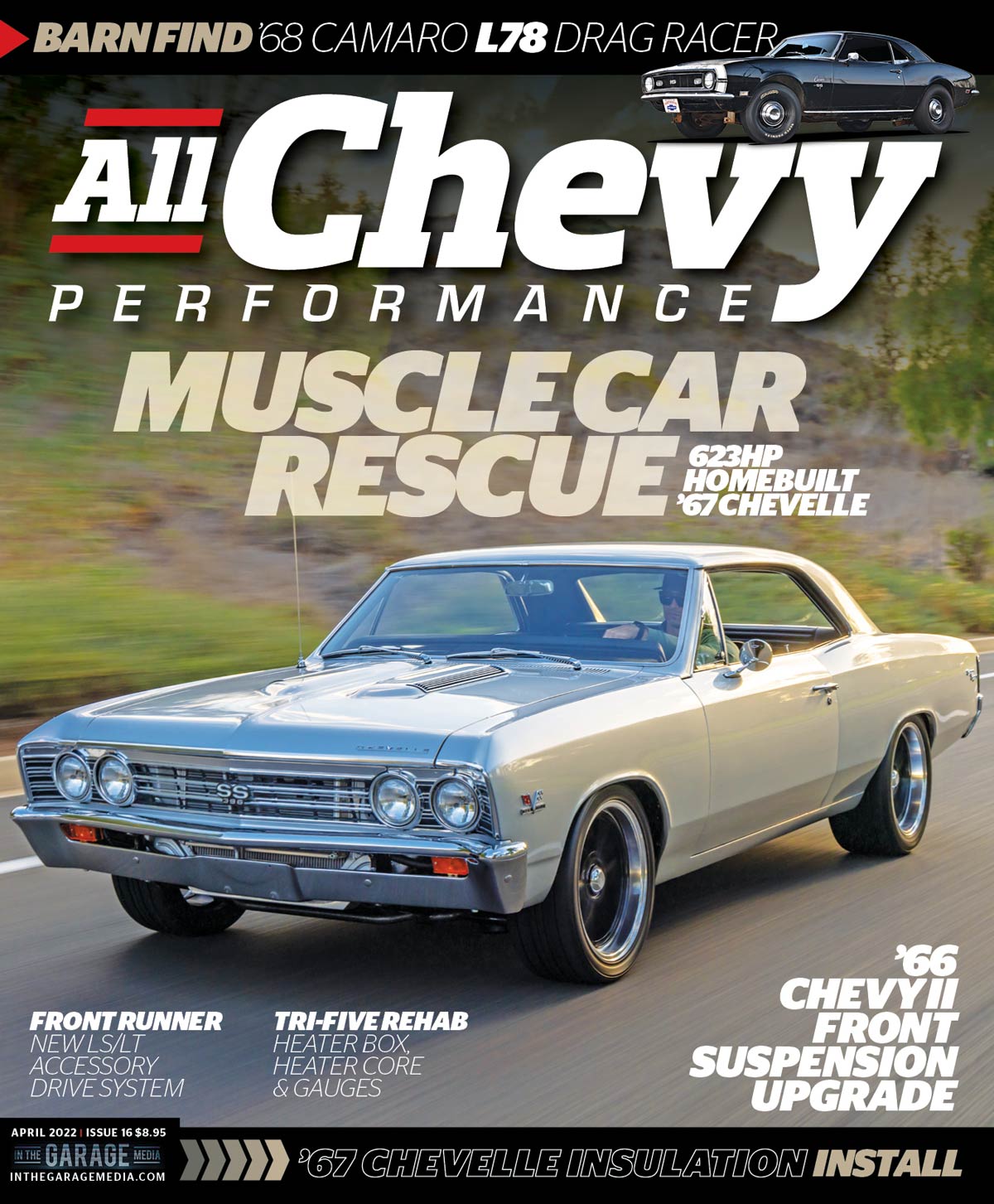
Photography by Wes Allison


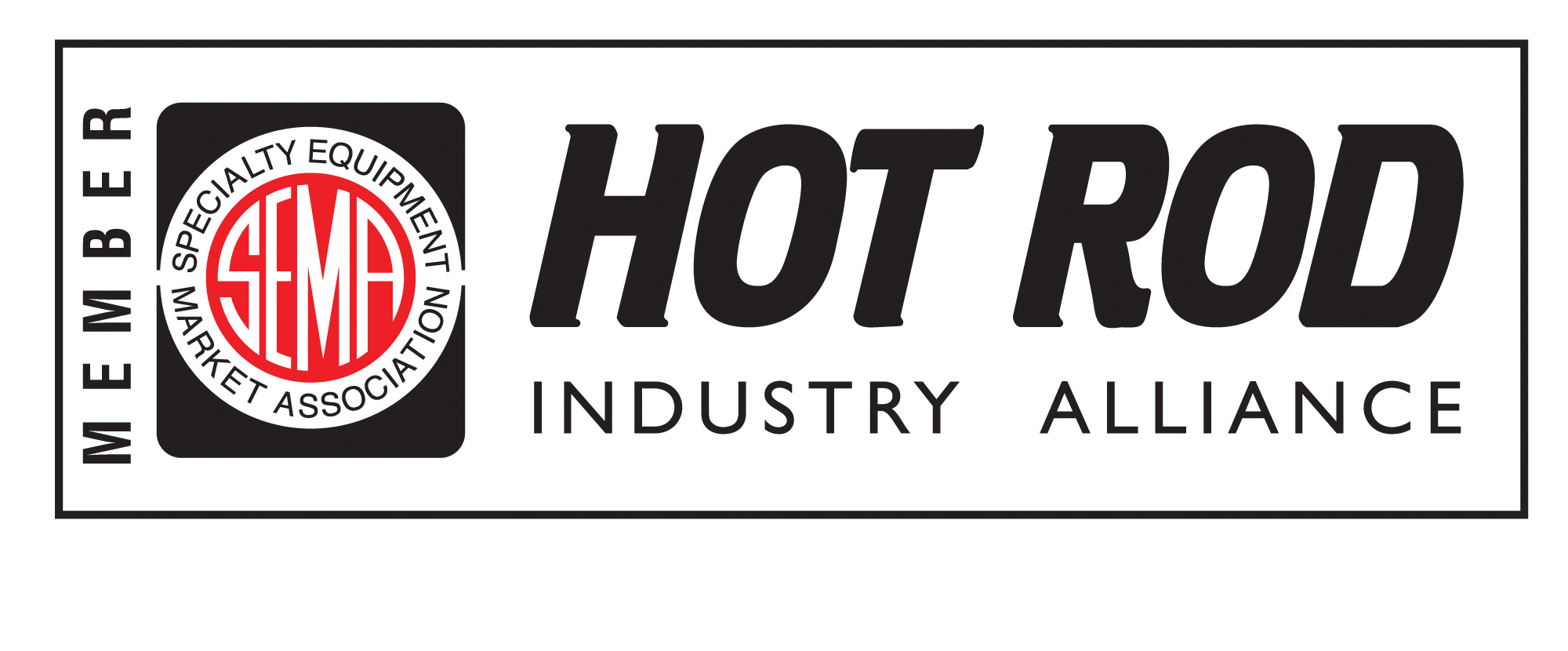

Wes Allison, Tommy Lee Byrd, Ron Ceridono, Grant Cox, Dominic Damato, John Gilbert, Tavis Highlander, Jeff Huneycutt, Barry Kluczyk, Scotty Lachenauer, Jason Lubken, Steve Magnante, Ryan Manson, Jason Matthew, Josh Mishler, Evan Perkins, Richard Prince, Todd Ryden, Jason Scudellari, Jeff Smith, Tim Sutton, and Chuck Vranas – Writers and Photographers
AllChevyPerformance.com
ClassicTruckPerformance.com
ModernRodding.com
InTheGarageMedia.com
Mark Dewey National Sales Manager
Patrick Walsh Sales Representative
Travis Weeks Sales Representative
ads@inthegaragemedia.com
inthegaragemedia.com “Online Store”
For bulk back issues of 10 copies or more, contact store@inthegaragemedia.com
info@inthegaragemedia.com

Copyright (c) 2022 IN THE GARAGE MEDIA.
PRINTED IN U.S.A.

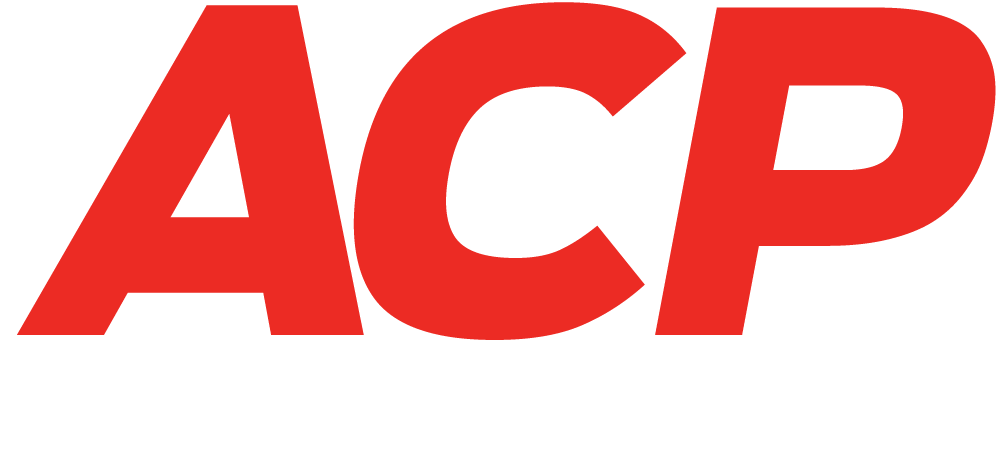

 FIRING UP
FIRING UP
 BY NICK LICATA
BY NICK LICATA
ue to the situation beyond anyone’s control (that dang COVID-19 thing), we took an unscheduled time-out from the 2021 Grand National Roadster Show (GNRS), but thankfully it was a “go” in 2022. The three-day event held at the Fairplex in Pomona, California, typically takes place the last weekend in January and features the highest quality cars from all over the country–some competing for the coveted AMBR (America’s Most Beautiful Roadster) award, while many non-roadsters came out in hopes of capturing an award in one of the various classes their car falls under. Other participants are content with just displaying their cars for all to enjoy. Although the show’s name implies it’s a roadster show, the event also includes over 500 top-quality builds of various genres. We love the variety of builds, which includes the best vintage muscle cars, customs, lowriders, trucks, and pretty much everything in between.
The show also includes the Granddaddy Drive-In. This is a great part of the show in which approximately 300-400 local hot rodders drive their vintage rides to the event with the opportunity to display their cars just outside of the main buildings.
So, with the GNRS back on track in 2022, it was nice to once again take in one of the best car shows the West Coast has to offer. As usual at a high-profile car show, there were scores of car-related vendors and plenty of Chevy muscle for us Bowtie faithful to enjoy, as well.
 Parts Bin
Parts Bin
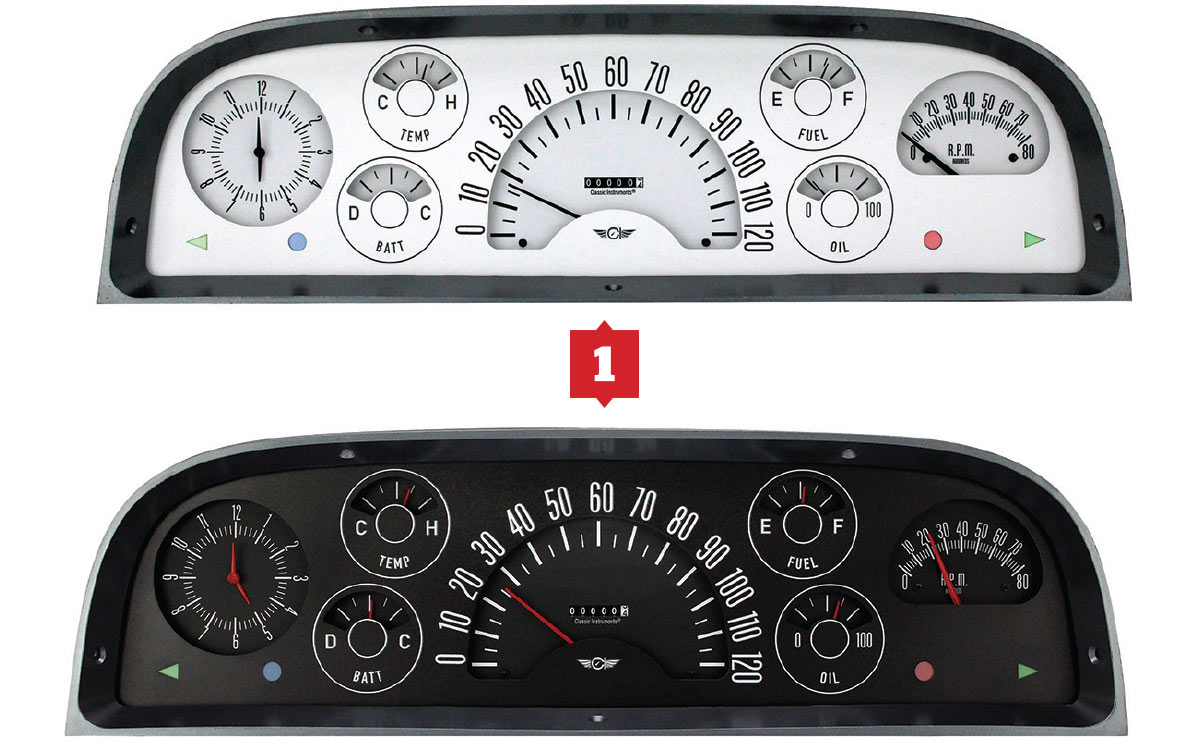


For more information, contact Classic Instruments by calling (800) 575-0461 or visit classicinstruments.com.
For more information, contact Schwartz Performance by calling (815) 206-2230 or visit schwartzperformance.com.
For more information, contact Summit Racing by calling (800) 230-3030 or visit summitracing.com.
 CHEVY CONCEPTS
CHEVY CONCEPTS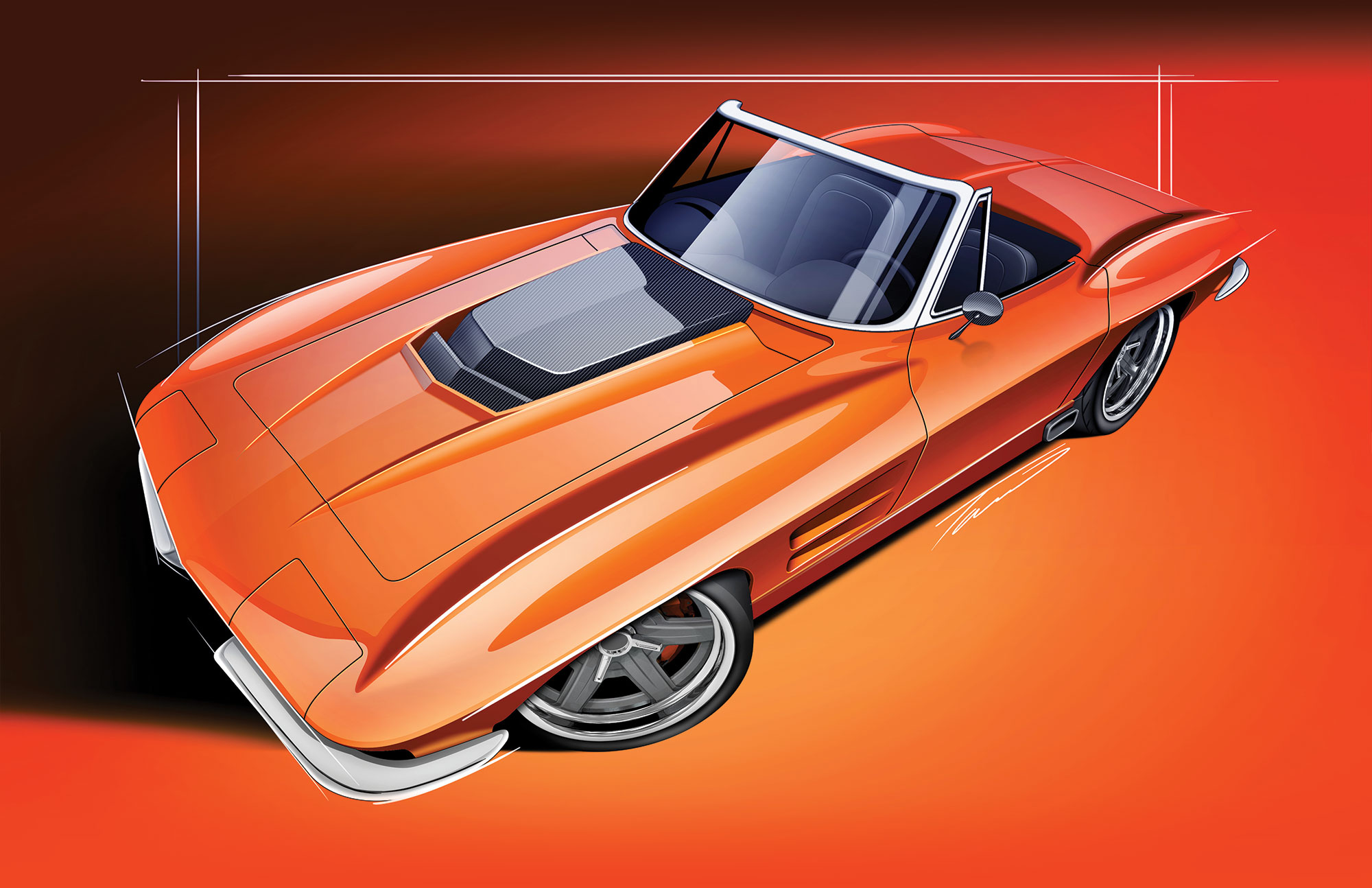

 Text & Rendering by Tavis Highlander
Text & Rendering by Tavis Highlanderometimes the overall appearance of a custom build is determined by one decision. In this case, a customer had settled on an LT5 crate engine as his powerplant of choice. To create room for the supercharger, and to also look really cool, the plan was hatched to create a C7 ZR1-style engine cover that worked with the C2. A new hood has been designed to bridge the gap between the Vette body and the custom carbon-fiber engine cover.
Keeping with the C7 ZR1 theme, the signature orange paint will be similar to the Sebring Orange of the C7. Other than the flashy paint, the body will stay fairly stock. Polished accents will nod to the past while the hood, wheels, and stance are a bit more modern. An Art Morrison chassis will allow for that low stance and Forgeline RS6 wheels will blend modern performance with vintage looks.
 FEATURE
FEATURE Photography by Wes Allison
Photography by Wes Allison
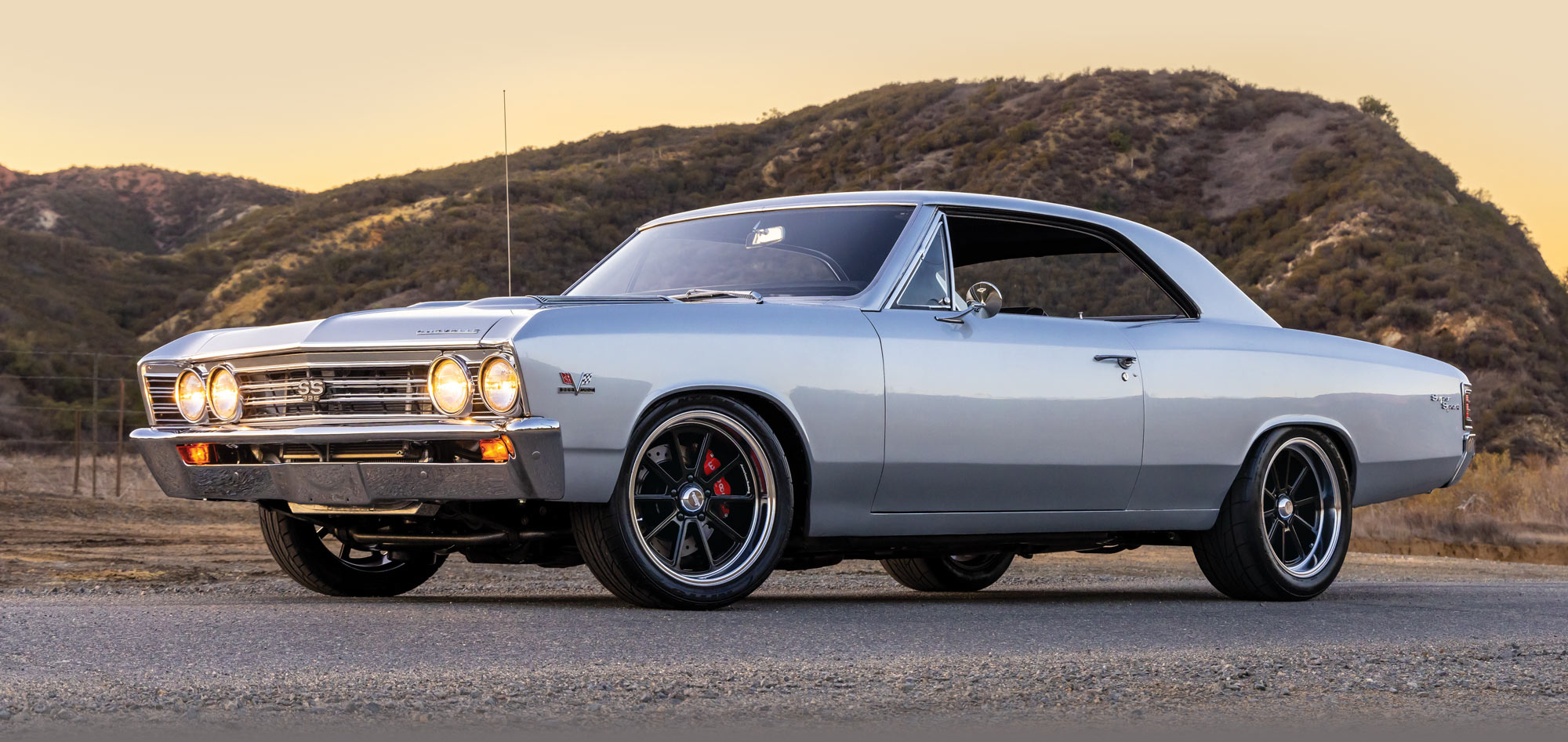

here are those who acquire the bug for all things mechanical as they navigate through life, while others seem to be born with the gene. Eric Fernandez is of the latter and performed his first engine swap at age 13. It was in his go-kart that he felt needed more horsepower, so he swapped out the old Briggs & Stratton for the more powerful Honda engine from his dad’s roto tiler. “Initially my dad was upset when he saw what I had done, but after calming down, he asked me if it worked,” Eric fondly remembers. “I started it for him and did a couple laps and remember seeing the smile on his face and him being surprisingly proud. I’ve been wrenching on engines ever since.”
In high school Eric remembers one of the kids driving a ’67 Chevelle to school every day. Seeing and hearing that car pull into the parking lot tugged at Eric’s emotions to the point that car became his dream ride.
About eight years ago, Eric was on a serious hunt for a ’67 Chevelle to fulfill that dream when he spotted this one on Craigslist. Located in an old truck yard in Chino, California, about 30 minutes from his home in Anaheim Hills, the car had no engine, no transmission, no interior, no nothing. What it did have was a small rust area just below the rear window and a whole bunch of potential. He handed over $2,200 for the roller and flatbedded it to his home garage and dug right in. “I disassembled the car right away and sent the shell out for paint and bodywork while I upgraded the chassis and suspension,” Eric tells. “Once the body came back with fresh paint, I mounted it to the frame where it sat for the next 4½ years.”
 TECH
TECH
 Photography by The Author
Photography by The Authorne challenge that everyone faces when making the move to an LS or LT engine is the accessory drive situation. Whether you’re installing a new-out-of-the-box engine or scoured the junkyard for a donor, the accessories will come into play soon.
If your donor engine came with brackets and accessories, chances are you’ll be hard pressed to make everything fit in your classic Chevy. Depending on your project, interference from the A/C compressor or power steering pump with framerails are nearly imminent—not to mention, the stock components were never designed with aesthetics in mind. Those are just a few of the reasons we turned to Vintage Air (VA) for an all-encompassing solution to our accessory drive needs on our LS1.
We were familiar with VA’s original Front Runner serpentine system that is centered around a precision billet machine bracket assembly, but their latest offering for LS/LT engines is completely different. All of the accessories, including the power steering pump, alternator, and compressor, mount to a unique cast-aluminum water pump assembly. This assembly has the mounting bosses for each accessory, the heater hose outlets, thermostat, and a cartridge-style water pump.
 FEATURE
FEATURE

 Photography BY The Author
Photography BY The Authoreb-based auction sites and social media swap ’n’ shops continue to be the driving force in the everyday vintage car marketplace. It seems that the quickest way to post, locate, and purchase affordable classic cars and their corresponding parts is on the sites that get the most traffic. They have proven to be the ideal places to grab a part, chat about tech, or, better yet, score a ride that will make your buds green with envy.
Case in point is this bitchin Camaro right here on these pages. Rob Feasel of New Egypt, New Jersey, knows the power of such sites; not only to score cars and pertinent parts, but also to get leads on cars that you might not even be looking for. Feasel is a connoisseur of all things Chevy A-body. The Chevelle is what really drives his lust for classic rides. However, while selling off unneeded F-body parts on an auction site, he got a lead on a freshly pulled ’68 big-block Camaro barn find that he just couldn’t resist.
 TECH
TECHBY Tommy Lee Byrd  Photography by The Author
Photography by The Author

hevrolet had a good thing going when it spruced up the Chevy II platform in 1966. Even though the early cars were stylish and cool, the two-year run in 1966 and 1967 had one of Chevrolet’s finest body styles. However, there were quite a few carryover items from those earlier designs that made it into the redesigned platform. One of the major items is the front suspension, which features a coil spring that rides on top of the upper control arm. The real drawback to this design was the lower control arm, which was a very small unit with only one mounting point on the chassis. It was braced by a strut rod, which ran at an angle to add strength to the otherwise-flimsy control arm.
1962-67 Chevy IIs have a reputation for darting under braking and other unfavorable characteristics, such as inconsistent suspension alignment. The flaws of this design are amplified by age, as worn or cracked rubber bushings allow the front suspension to flex and provide unpredictable handling. Our ’66 Chevy II project car had all of the signs of a worn-out front suspension, and it was time for an upgrade. We could’ve easily replaced all the bushings with stock equipment and been back on the road, but we wanted a long-lasting upgrade that would eliminate a major problem area. For that, we called Classic Performance Products (CPP) and ordered a MINI Sub-Frame Kit, which includes a custom 1/4-inch steel crossmember and tubular lower control arms to improve the front suspension geometry and remove the pesky strut rods altogether.
 FEATURE
FEATURE
 Photography BY Wes Allison
Photography BY Wes Allisons ’66-67 Chevy II Novas continue to gain ground in popularity, more enthusiasts are doing their best to build one just a bit different than the masses. Rick Katz has wanted one of these box-style cars since he was 10 years old. “My older brother had one when we were teens, but he sold it—without my authorization, I might add,” Rick laughingly remembers. Rick didn’t offer up his age, but we can assess that there’s been a few trips around the sun since he has lusted after these little Chevys. The Southern California resident began a serious search for just the right example about five years ago. “A buddy of mine found this one on the Hemmings classifieds website. It was about 80 percent completed and appeared to be exactly what I was looking for,” Rick says. “The bad thing is that the car was in Nashville, but according to the photos in the ad, the car looked to be super clean, so I booked a flight to check it out. The day I got there it was pouring rain. Fortunately, the owner had a lift so I was able to see the underside, and it actually looked better in person than in the photos.”
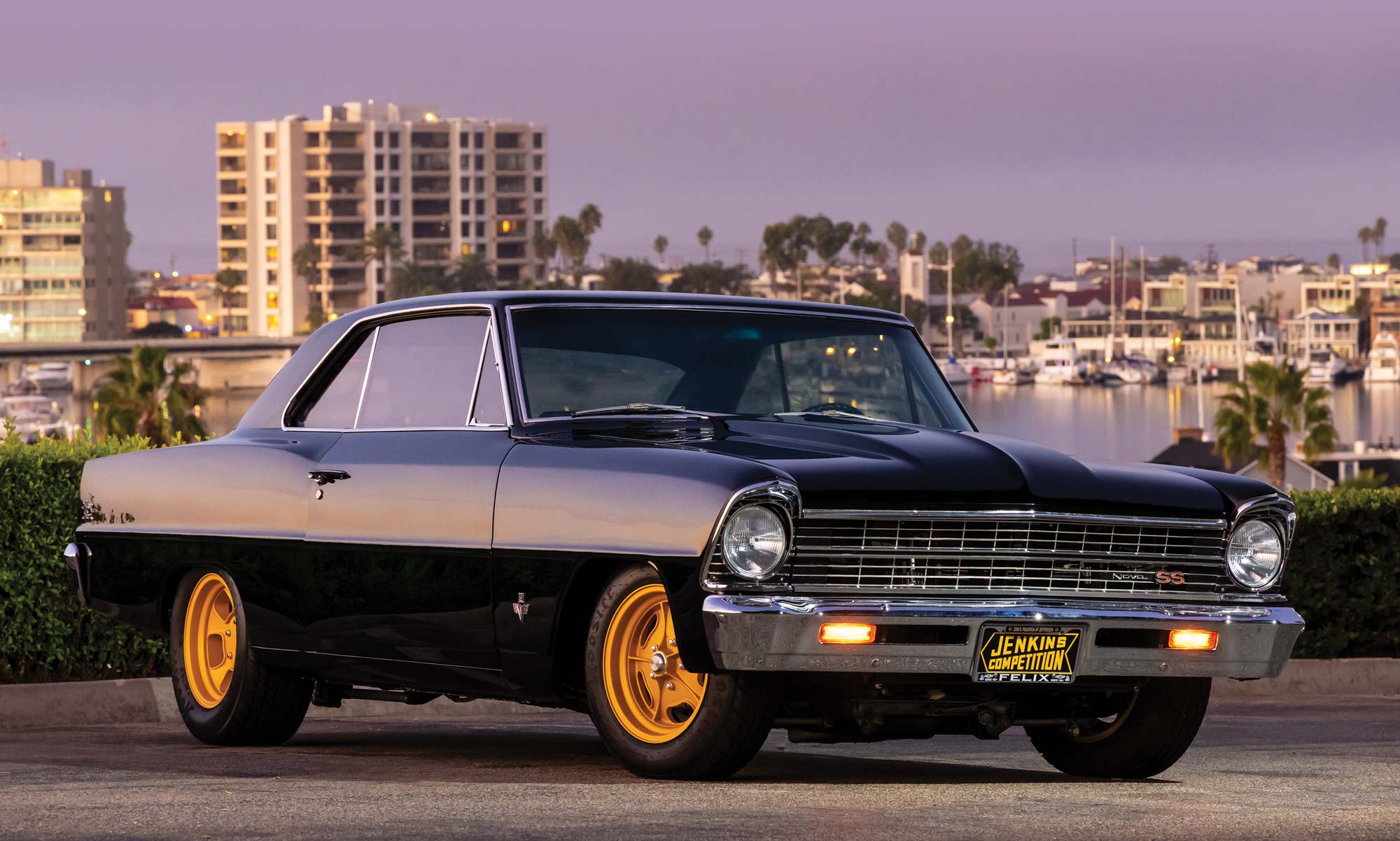
 TECH
TECHInTheGarageMedia.com
BY Ryan Manson  Photography by The Author
Photography by The Author

hen it comes to rewiring a classic Chevy, oftentimes other items need to be rehab’d, restored, or otherwise modified to make the restoration job complete. These can include new bulbs, headlights, lenses, gauges, or even entire climate-control systems. Recently, we were plugging along on a rewire job on a ’55 Chevy Bel Air when it was decided that our heater system as well as the gauge cluster could use a little love. Simple enough. With a Danchuk catalog in hand, we ordered up the appropriate parts from their website, and in short order had what we needed to complete the job.
Restoring our gauge cluster turned out to be a pretty simple affair as all it needed were some new lenses and light tubes. Once that was complete, we buttoned it back up and proceeded to wire the back side of the cluster using the provided harness and pigtails provided by American Autowire as part of their Classic Update Kit for Tri-Fives.
 FEATURE
FEATURE
InTheGarageMedia.com

 Photography by JOHN JACKSON
Photography by JOHN JACKSONt’s no secret the ’69 Camaro is considered the most popular of all vintage muscle cars. With the massive appeal and huge success of the ’67 and ’68 models, GM designers knew they were onto something. But even so, they couldn’t help but tweak the bodylines of the ’69 with molded swoops along the front fender that continue to the door where it gradually fades, only to reestablish itself on the rear quarter-panel, giving the car an illusion of motion while sitting still. Genius! But they didn’t stop there–adding in the non-functioning “gills” in front of the rear tire creates a performance trait that adds to already-excellent styling.
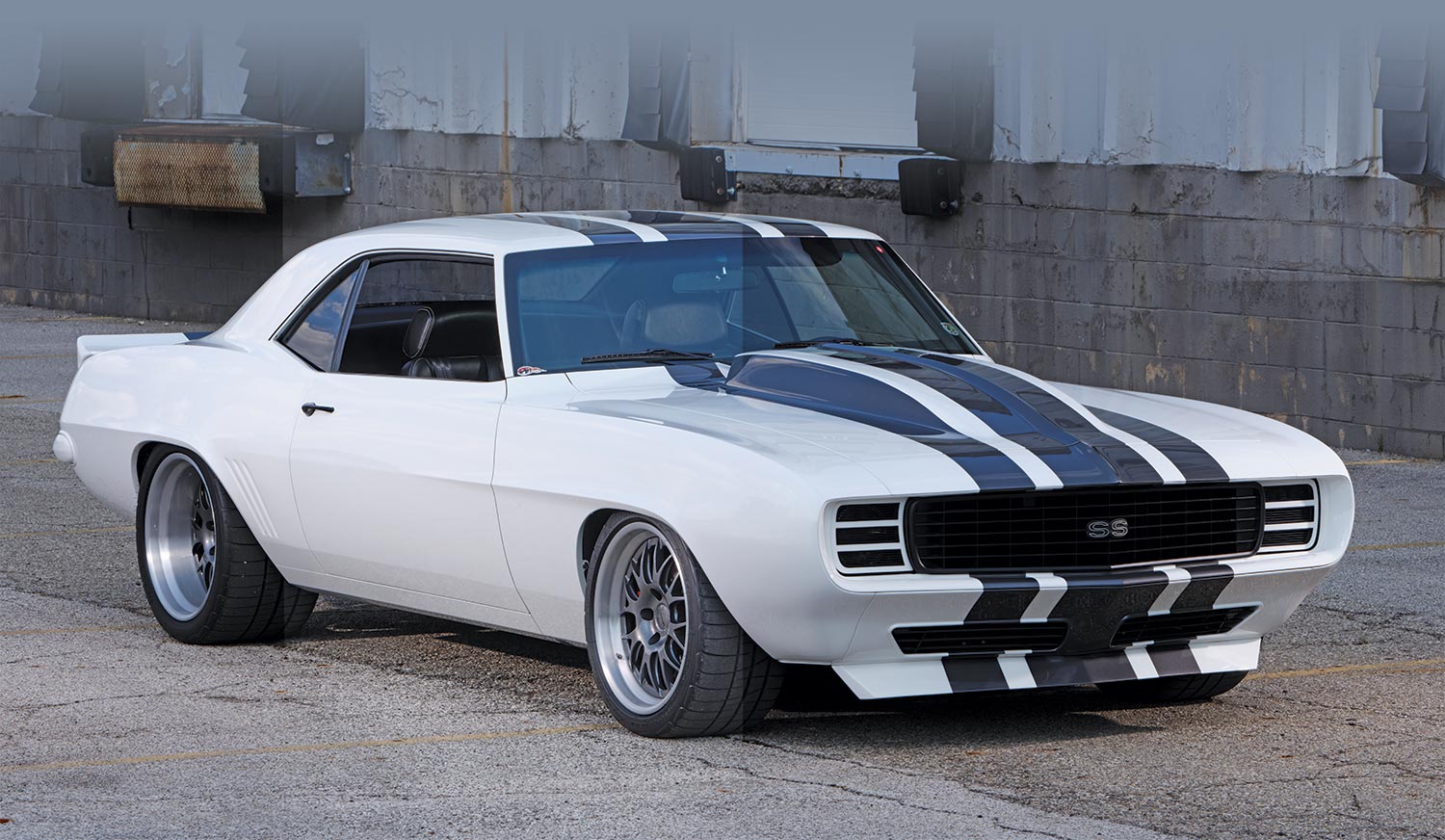
 TECH
TECH Photography by Jason Scudellari
Photography by Jason Scudellarihere was a time many years ago, around the time Editor Licata got his first Ramones T-shirt, that for many of us the comfort level inside a performance car wasn’t a concern. We put up with noise levels that were similar to being inside in a 55-gallon drum during a hailstorm and temperatures that rivaled those found in Death Valley during the summer—youthful enthusiasm often overrides pain and discomfort. But things have changed; today most of us expect more from our cars than we used to, which includes a quiet, comfortable interior.
When auto manufacturers began taking passenger comfort more seriously in the late ’80s (primarily due to advertising campaigns on the subject by Lexus), they began to search for products to meet the challenge of sound reduction and reduced heat absorption. A company named Dexter Automotive had a specially compounded butyl rubber that proved to be that product and it was approved by General Motors, Chrysler, and other manufacturers for use in production vehicles. Today that company is HushMat and the product is known as HushMat Ultra, which is the only OEM specified and approved sound deadening and thermal insulating material available to the automotive aftermarket.
 FEATURE
FEATURE
 Photography by The Author
Photography by The Authorew Yorker Ben Carenza is no stranger to vintage tin and has owned a wide berth of different cars over the decades. While several Fords, including a ’69 Ranchero and ’73 Mustang, were in the mix, Ben has demonstrated a clear preference for Bowtie-branded machinery. “I’ve had several ’66 and ’67 Novas,” he recalls with a broad smile, “a ’57 Chevy, a ’40 Chevy pickup, a ’63 Chevy pickup, a ’62 Biscayne, and an ’81 Malibu.”
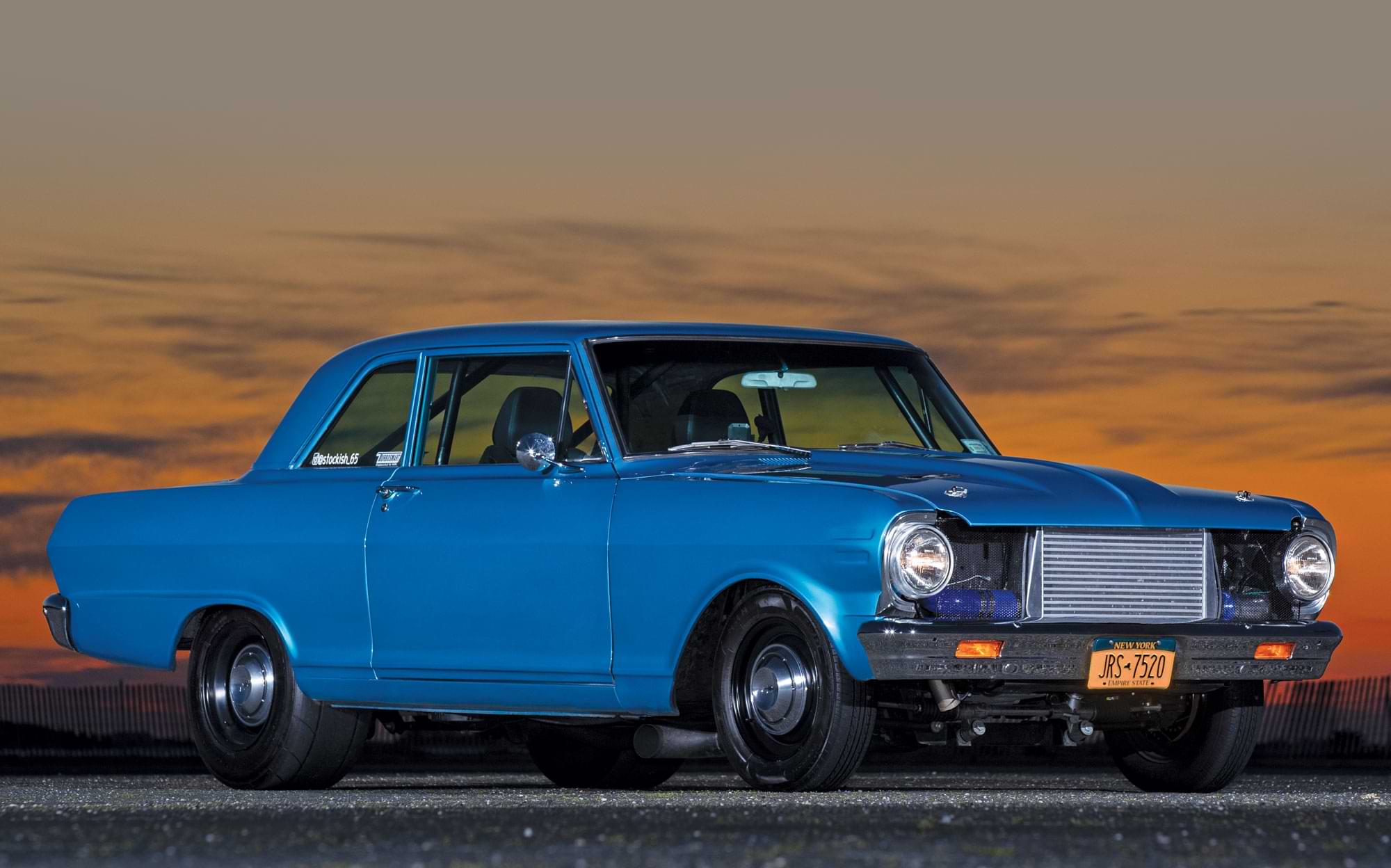
 TECH
TECH Photography by The Author
Photography by The Authorhere are certain skills that every car guy worth his 9/16-inch end wrench should know how to perform. Drilling holes in the proper place, cutting threads, and general fabrication skills are not difficult. High schools used to teach these lessons in metal shop, but not anymore. So this new generation of car guys will have to learn it on their own.
The skill we will concentrate on today is creating a leak-free tubing flare. There are actually several different angles that are used as well as metric bubble flares used on import cars. We’ll maintain our focus on the two most popular standards, the 45-degree flare and the AN 37-degree flare. These will require different tools, and we’ll cover that as well.
Advertiser
- American Autowire29
- Art Morrison Enterprises25
- Auto Metal Direct41
- Automotive Racing Products39
- Borgeson Universal Co.51
- Bowler Performance Transmissions85
- Classic Industries27
- Classic Performance Products4-5, 85, 92
- Concept One Pulley Systems79
- Dakota Digital91
- Danchuk USA11
- Duralast43
- FiTech EFI73
- Golden Star Classic Auto Parts7
- Heidts Suspension Systems71
- Holley Performance Products57
- HushMat79
- John’s Industries85
- Lokar2
- National Street Rod Association69
- Original Parts Group63
- Powermaster Performance71
- Roadster Shop65
- Schwartz Performance87
- Scott’s Hotrods79
- Speedway Motors55
- Steele Rubber Products45
- Summit Racing Equipment9
- Thermo-Tec Automotive87
- Trick Flow Specialties73
- Vintage Air6
- Wilwood Engineering13
- Year One85
 BOWTIE BONEYARD
BOWTIE BONEYARD

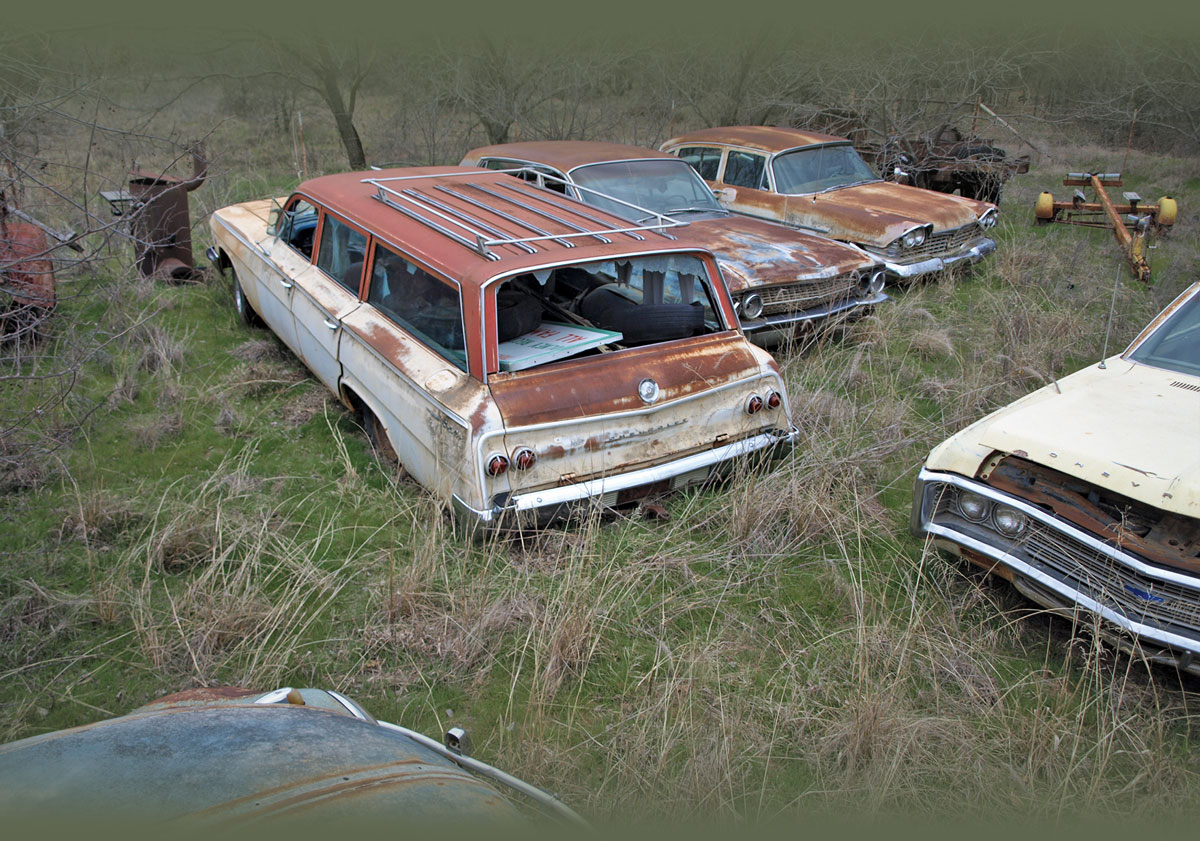
 Photography by The Author
Photography by The Authorf you grew up in the ’50s, ’60s, ’70s, or ’80s you remember how common station wagons were in everyday traffic. At every intersection, there they were. For the most part, there wasn’t much to get excited about except for the occasional 396, 427, or 454 front fender emblem. Or, when viewed from the rear, the presence of dual exhaust tips caught the eye of performance-oriented spectators–like us.
Unfortunately, most wagons share front sheetmetal with two-door and convertible models. So, when values of those models took off, wagons often lost their noses then went to the junkyard–despite having solid bodies from the cowl back. But since more efficient box-like minivans took over the chore of hauling the family beginning in 1984, within a decade the great American station wagon was about over.

